Visit Kakheti: The Ultimate Guide to Georgia’s Wine Region
40 min readThe most comprehensive guide to visiting Kakheti currently available online. Here’s absolutely everything you need to know to sip, savour and sightsee your way around Georgia’s premier wine region, including the best Kakheti wineries, monasteries, and things to do in Sighnaghi and Telavi.
Whether you’re an aspiring sommelier or an unapologetic beer drinker, raising a glass of Saperavi in Kakheti, Georgia’s premier wine region, is an essential part of any good Caucasus itinerary.
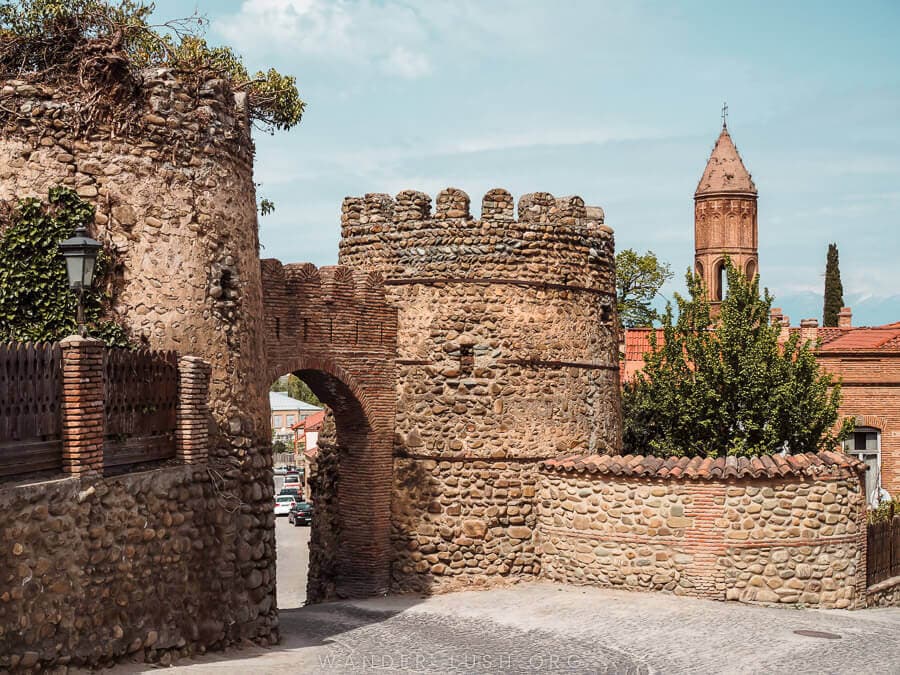
In Georgia, viniculture is as old as the hills. The country’s signature vino – fermented from the whole grape (skin, stems and all) in a clay vessel called a qvevri – is UNESCO-listed for its cultural value and unlike any wine tradition you’ve experienced before.
Kakheti is one of the most popular places to visit in Georgia, and for good reason. It’s not the country’s only wine region, but it is the most productive. The sheer number of medium and large-scale wineries, family Maranis (cellars) and wine-producing monasteries makes the Kakheti Wine Route the best place to sample the width and breadth of Georgia’s wine industry.
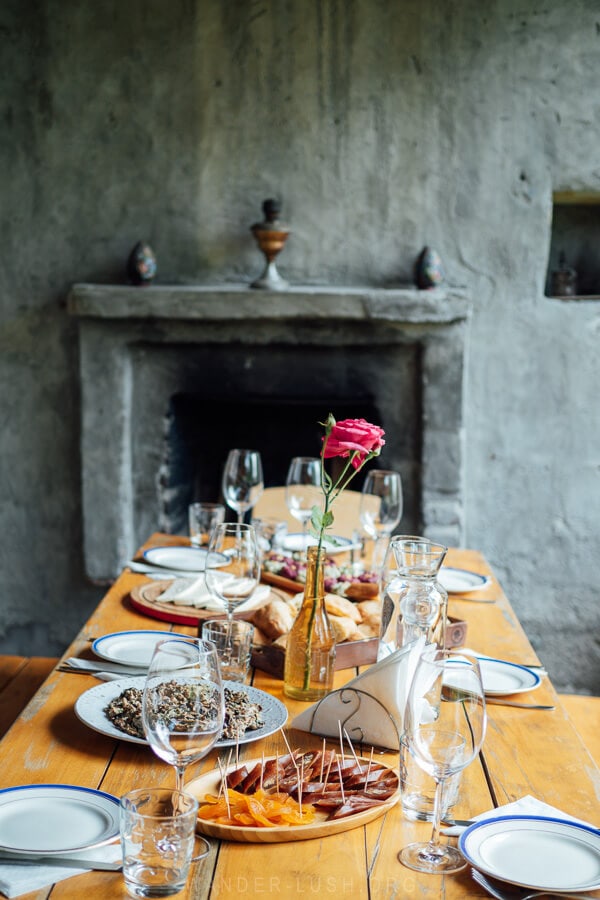
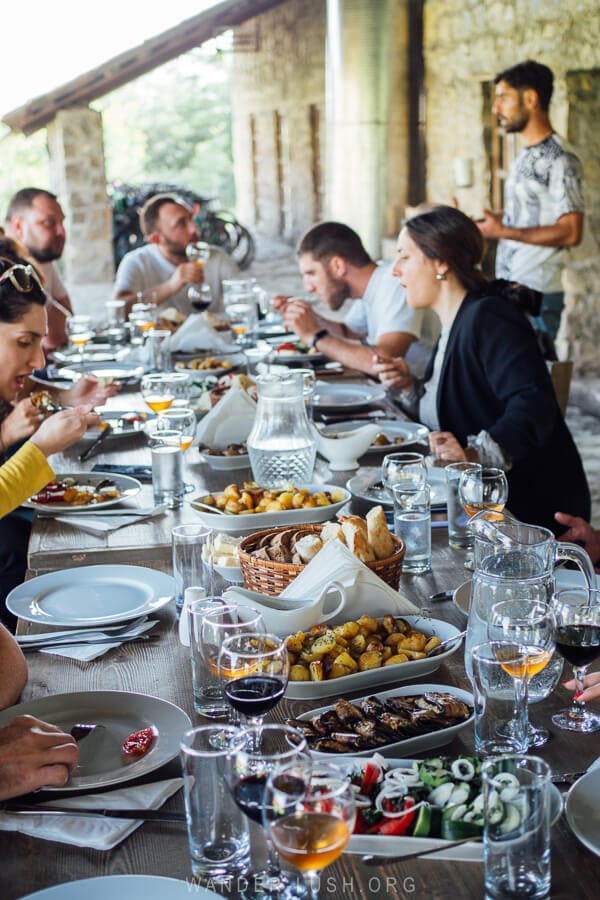
I’ve visited Kakheti more times than I can count. I’ve explored the area using public transport (marshrutka minivan), visited on various day and multi-day tours from Tbilisi, and most recently I have been driving myself around in a rental car.
This guide brings together all my favourite parts of the wine region, organised into a logical 72-hour itinerary. As well as vineyards, monasteries and churches, it covers Kakheti’s most charming cities and towns, a few Soviet-era throwbacks, and plenty of other hidden gems.
Please note: This post contains affiliate links, meaning I may earn a commission if you make a purchase by clicking a link (at no extra cost to you). Learn more.
Only have time for a Kakheti day trip? Eat This! Tours is my preferred provider for wine tours in Georgia. They offer a number of excellent pre-designed itineraries that focus on small family wineries and authentic experiences. Many of their local guides are trained sommeliers – so if you want an in-depth wine experience, this is it. Browse day trips and multi-day tours here and use the coupon code wanderlush to get 5% off.
About Kakheti wine region
Kakheti is Georgia’s biggest region by area, taking in the entire eastern part of the country. The landscape and climate varies dramatically from the high mountains of Tusheti in the north to the semi-desert landscapes of Udabno and Vashlovani in the south.
In between, the Alazani river and its wide valley cut through from north to south, carving out dozens of different microclimates that in turn provide the perfect conditions for cultivating grapes. Georgia has more than 500 endemic varieties in total, many of which grow (or once grew) in fertile Kakheti. Today, this remains Georgia’s premier wine region, responsible for around 70% of the country’s harvest.
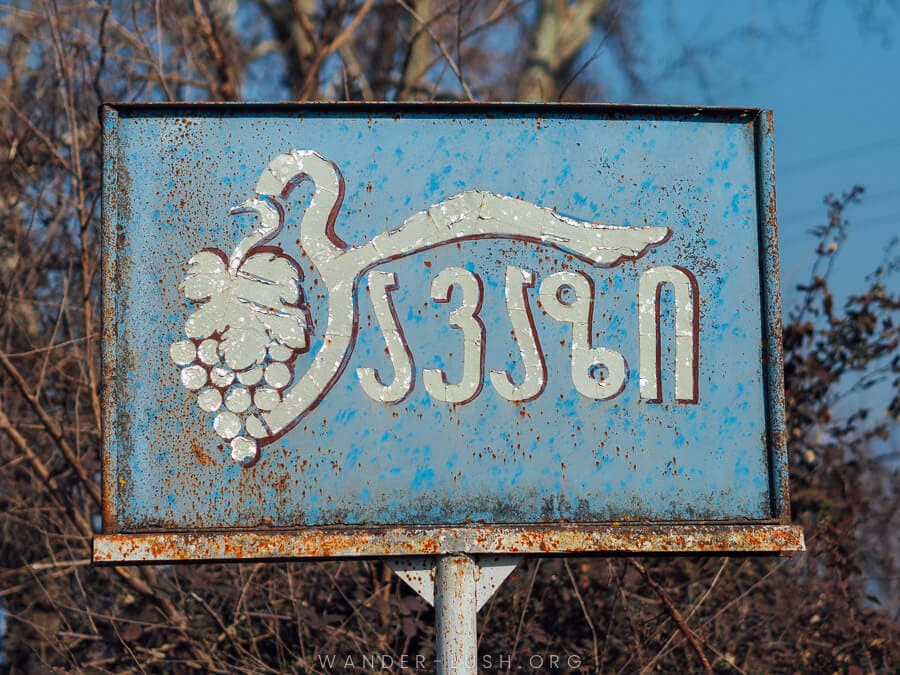
Archaeological evidence dates Georgia’s winemaking tradition back to the 6th millennium BC, predating the earliest wine production in France by more than 5,000 years. Wineries in Kakheti continue to live out this legacy.
They vary from tiny family operations that stick to time-honoured natural winemaking methods all the way through to large commercial wineries that employ a mix of Qvevri and European-style techniques.
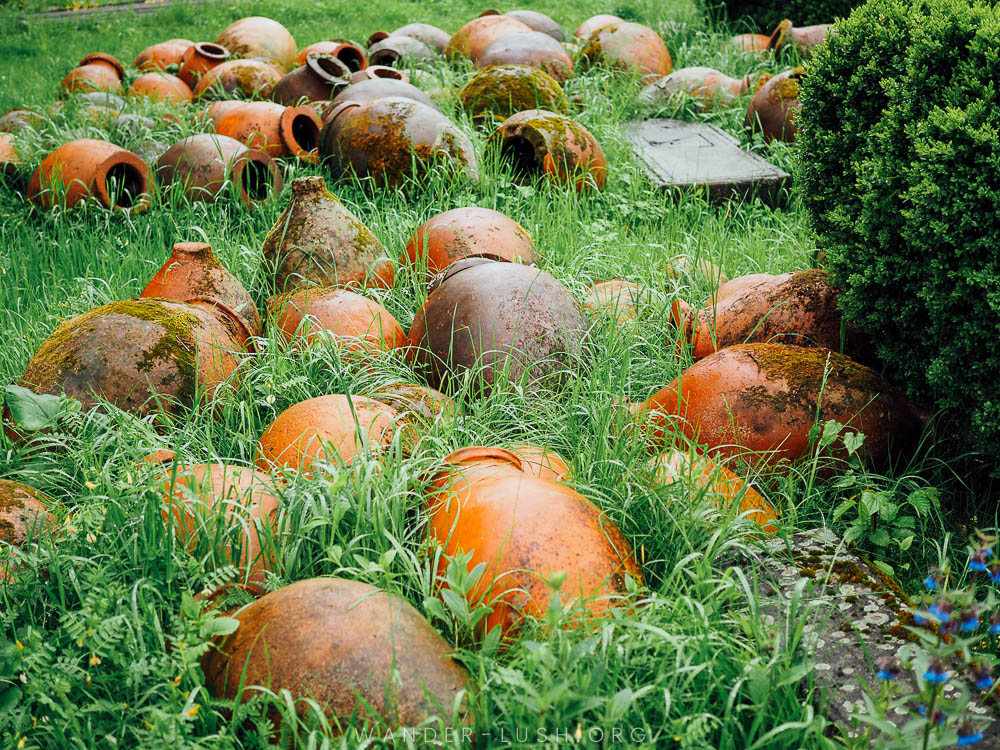
Aside from vineyards, Kakheti is known for its medieval monasteries and hilltop churches, many of which date back to the 5th or 6th century when Kakheti was its own self-governed kingdom. Wine cellars feature prominently in some of the oldest and most revered, including Alaverdi and the cave monasteries of David Gareja in southern Kakheti. Wine and religion are closely intertwined, with some of the country’s best-loved vintages bottled by monks.
Winemaking, toasting and drinking are all tied inextricably to the nation’s history, folklore and religion. When you visit Kakheti, not only do you get to taste Georgian wine, you also get to immerse yourself completely in these cultural elements. This makes Kakheti a must-visit in my books.
Some travellers only have time for a quick day trip from Tbilisi to Kakheti. If your Georgia itinerary allows, I highly recommend a longer sojourn in wine country. Three days is the perfect amount of time.
Planning to visit Kakheti? Don’t miss my other guides for the region:
→ How to get to Kakheti from Tbilisi
→ Where to stay in Kakheti wine region
→ Best things to do in Telavi
→ 12 best wineries in Kakheti
→ How to choose a Kakheti wine tour
Top 10 things to do in Kakheti
1. Drink Qvevri wine at a family Marani
The most intimate and memorable wine experiences usually happen at family run cellars, where production is small-scale and knowledge is passed down through the generations. I’ve included some of my favourite Maranis in the Kakheti itinerary below. Here is an extended list.
→ Check out my Tbilisi Wine Guide for the best wine tastings, bars & bottle shops in the capital.
2. Tour the ‘wine tunnel’ at Khareba
On the opposite side of the spectrum from family Maranis are Kakheti’s commercial wineries. These are much slicker operations (and thus more touristy and expensive as a result) – but that doesn’t mean you should necessarily skip them. Khareba is my favourite – it includes a long, dark and cool ‘wine tunnel’ cellar cut from a rocky slope in the foothills of the Greater Caucasus.
3. Climb the old walls in Sighnaghi
With its cobble streets and ornate balconies, Sighnaghi might just be Georgia’s prettiest town – and it’s conveniently located at the gateway to the wine region. Climbing Sighnaghi’s City Walls for panoramic views of the Alazani Valley is a highlight of any visit.
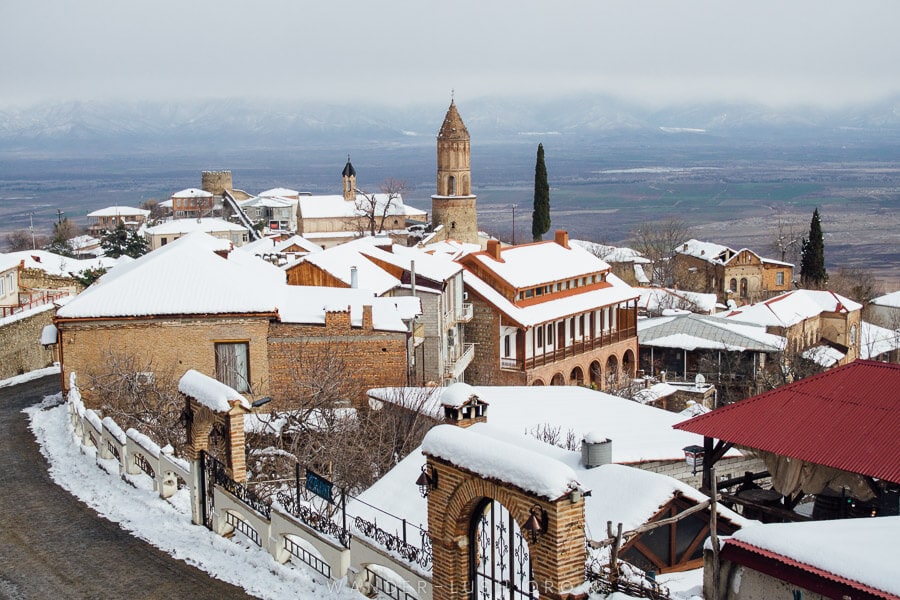
4. Visit the magnificent monasteries of Alaverdi, Ikalto & Dzveli Shuamta
This trio of monasteries are among Georgia’s most important. Each has a long history and a spectacular location, with the snowy peaks of the Greater Caucasus as a backdrop.
5. And the hilltop churches & citadels of Gremi & Nekresi
Perched way up in the foothills along the northern side of the valley, these two landmarks cut an impressive figure when viewed from below and command epic views from the top.
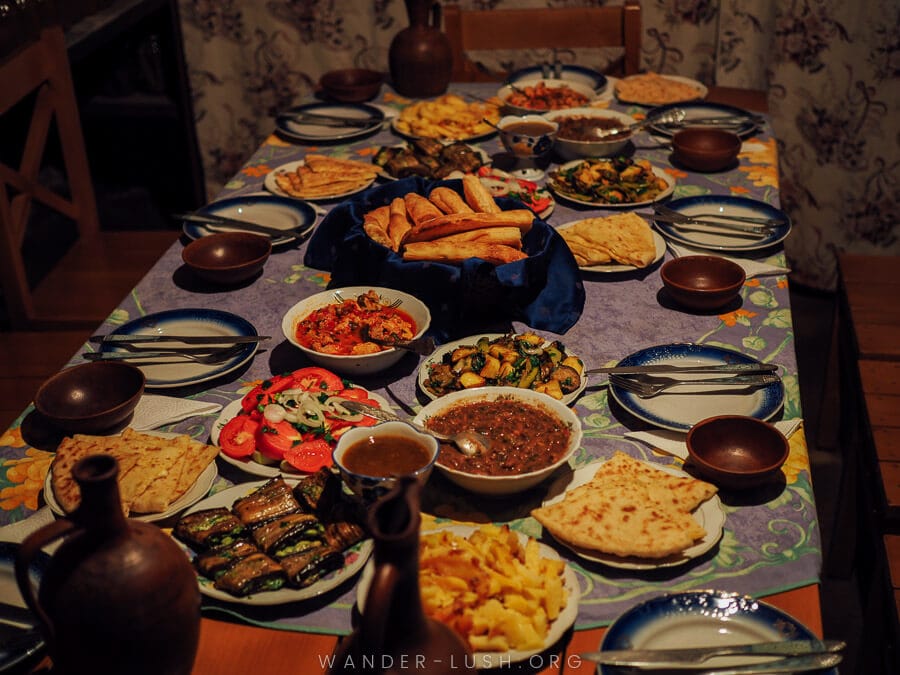
6. Spend a night in the vineyards
Many commercial and family vineyards in Kakheti offer guest accommodation so you can rest your head among the grapes. A few of the region’s heritage wine estates, including Vazisubani and Tsinandali, have been transformed into 5-star hotels. (Trust me, it’s worth the splurge!)
7. Walk the grounds of Bodbe St. Nino’s Convent
My favourite religious complex in all of Georgia, Bodbe Convent is located a short walk from Sighnaghi. The valley views and the artfully manicured gardens are what sets it apart.
8. Get lost in the Telavi Bazaar
Kakheti’s biggest city is home to a roaring produce market that is a lot of fun to explore.
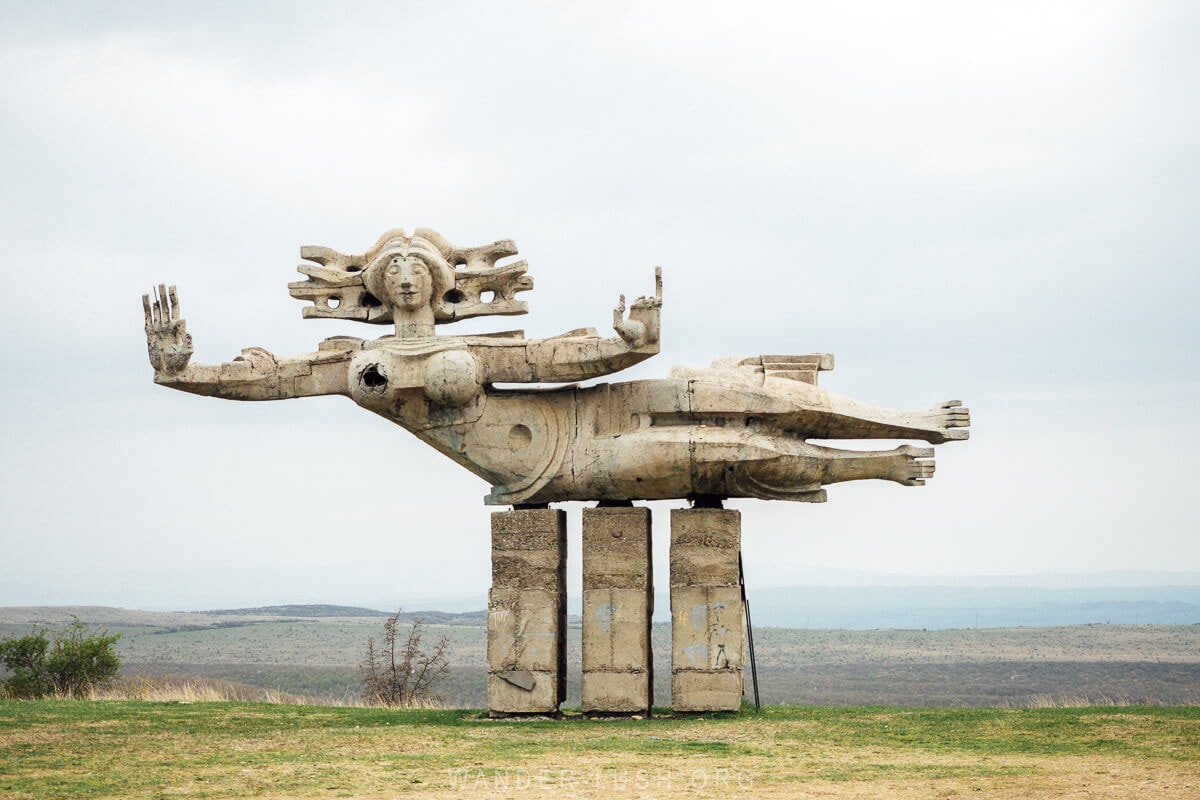
9. Search for Soviet relics
When Georgia was part of the USSR, Kakheti was the site of industrial-level wine production. Factories such as the Red Cellar were built, and entire towns and small cities including Gurjaani were created to accommodate workers and their families. If you are interested in Soviet history and architecture from this period, you will find lots of interesting mosaics and monuments around the place.
10. Eat fresh Churchkhela & enjoy a Kakhetian Supra
The main highway into Kakheti is lined with stalls selling Churchkhela (a sweet made from nuts dipped in grape juice roux) and Tklapi (fruit leather). Fruits, preserves and other grape-related specialities are often paired with artisanal cheese for boards that accompany wine tastings.
Kakhetian cuisine is known for being simple yet hardy and features lots of Mtsvadi (BBQ meat) and fresh vegetable dishes. Combined with wine and Chacha, it’s your ticket to a delicious Supra feast! Many guesthouses and wineries offer them.
Kakheti travel guide
Now that you have an idea of what Kakheti has to offer, let’s begin with some practical trip planning tips.
Best time to visit Kakheti
I’ve been lucky enough to visit Kakheti during every season. In summer, the vines are heavy with beautiful grapes – but it’s blistering hot and the air can be very hazy. It gets crowded in Sighnaghi and at some wineries, particularly on summer weekends.
Spring in Kakheti (especially late April/May) is very pleasant, with mild temperatures and peach blossoms aplenty. The vines are budding, wineries are opening up for the season, and the landscape is nice and green. It’s much less crowded around this time compared with summer.
Winter in Kakheti is a different kind of magic. Tourists are scarce, you get crystal-clear views of the Greater Caucasus, and if you’re lucky, you’ll get to see Sighnaghi beneath a blanket of snow. On the flip side, the landscape is a bit dry (though still beautiful in its own way) and some wineries might not be operating.
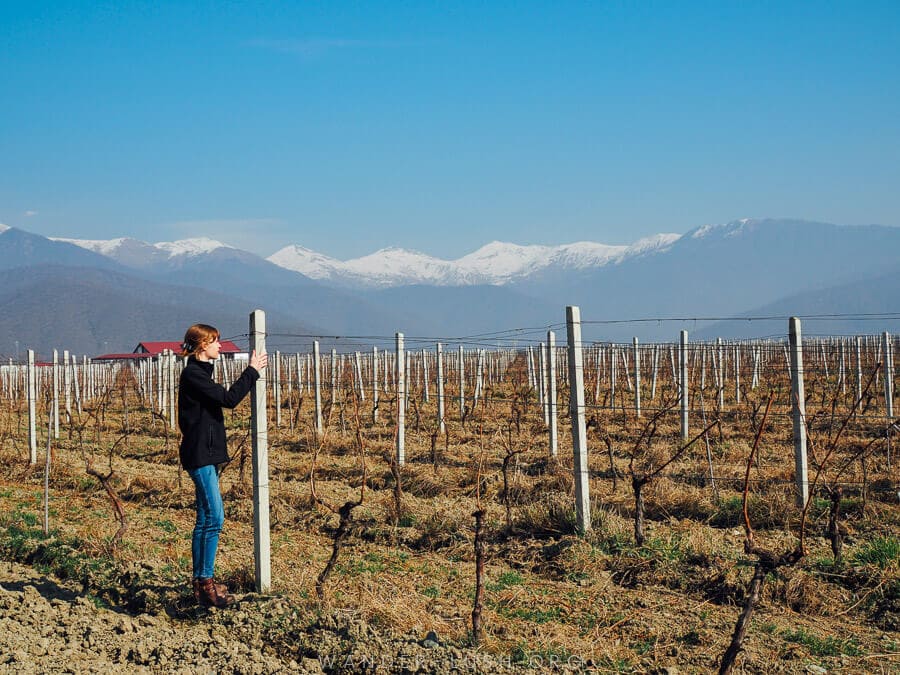
Should you visit Kakheti for the wine harvest?
The most atmospheric time of year in Kakheti is fall when the Rtveli grape harvest takes place. This usually occurs in late September or early October, but the exact dates vary from year to year and between vineyards.
It’s important to understand that vineyards only have a very short window to harvest their grapes (2-3 days max). This is obviously their busiest weekend of the year, and it’s all hands on deck. Many vineyards close to tourists as a result. Others are open, but only if you book a special package (see your options here in my Rtveli Event Guide).
The ideal scenario is to join a family on their vineyard, where you can help out with picking and even pressing the grapes the old-fashioned way in a wooden trough.
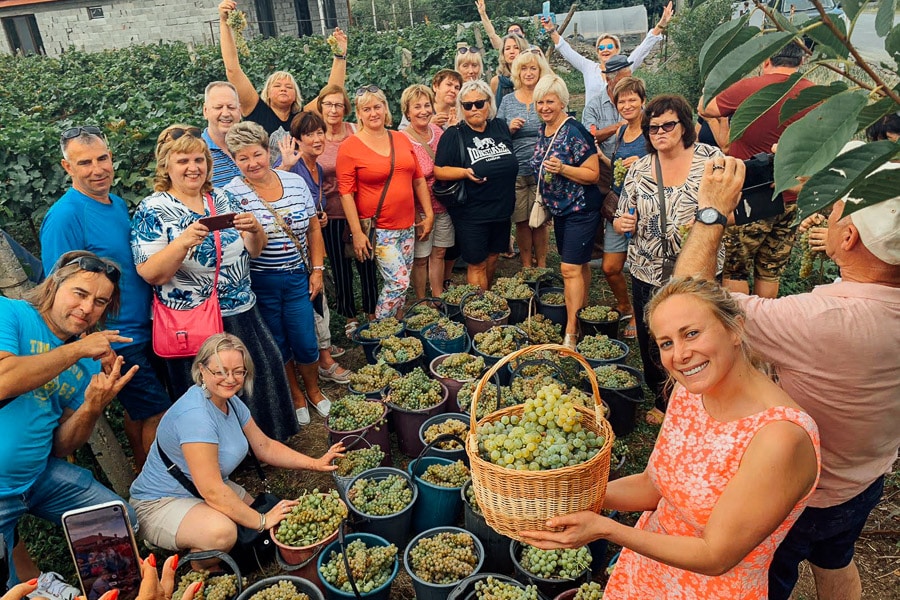
The timing of the harvest is difficult to predict as it changes from year to year depending on various factors including the weather. Sometimes the final dates are only decided a week or two in advance. Therefore, it’s hard to plan around.
If you happen to be in Georgia when the Rtveli takes place then by all means, it’s a great time to visit Kakheti provided you’re organised and know where you’re going.
Remember that winemaking is a year-round job and there’s something interesting to observe no matter the season. In spring, you get to taste the new season wines and see the first buds, and in winter, you can watch how the vines are pruned and wine bottled.
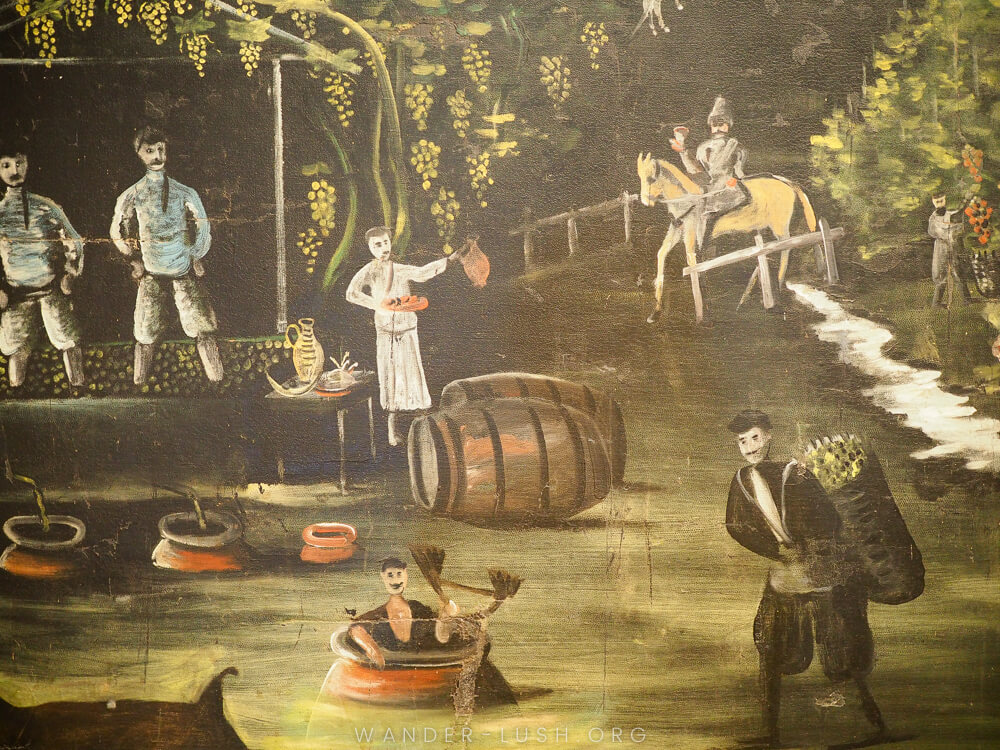
How to get to Kakheti from Tbilisi
Kakheti is a quick trip from Tbilisi. Travelling by car, it takes 1.5-2 hours to reach Sighnaghi from the city, and just under 2 hours to reach Telavi. Note that there are two ways to reach Kakheti: The Kakheti Highway and the more-scenic Gombori Pass.
My preferred way to travel to Sighnaghi is by shared taxi or with a private transfer booked through GoTrip. If you’re on a budget, marshrutka vans are perfectly acceptable.
→ See my Tbilisi to Sighnaghi transport guide for bus schedules, fares, and detailed information about travelling to Kakheti.
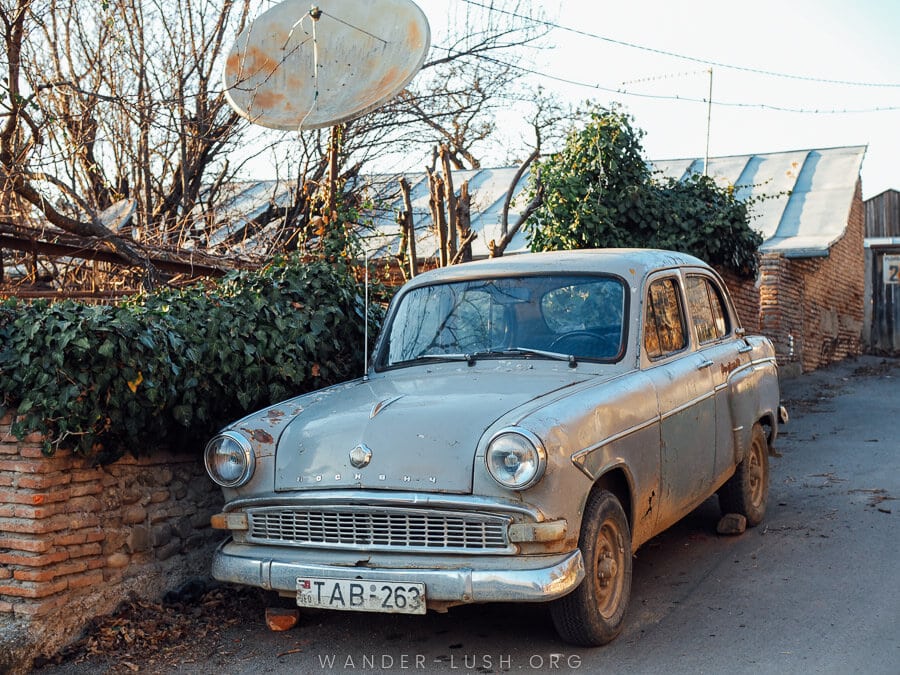
How to move around Kakheti
If you’re visiting independently, this requires a bit of forward planning – especially if you want to do wine tastings. While self-driving gives you the most flexibility, Georgia has a zero-tolerance policy on drink driving (how strictly that law is enforced is another matter), so it’s not really an option if you plan on hopping between vineyards.
The most convenient option is to hire a car and driver for the day. This can be organised through your guesthouse once you arrive, and should cost around 50-60 GEL per person for a full day depending on the route and how many people you have (you can save by pairing up with other travellers).
Normally it will either be someone from the family, a relative or a friend behind the wheel. There is some flexibility to choose your stops, but normally the driver will have an agreement with a couple of wineries and take you on a predetermined route.
If you want more flexibility to choose your start time and visit wineries and monasteries that are off the stock-standard trail, then you’re better off finding a driver independently. I recommend hiring a car through GoTrip for the day. You can stop as often as you like, wherever you like, without the set price going up.
→ Read my review of GoTrip and start building your personalised Kakheti road trip itinerary.
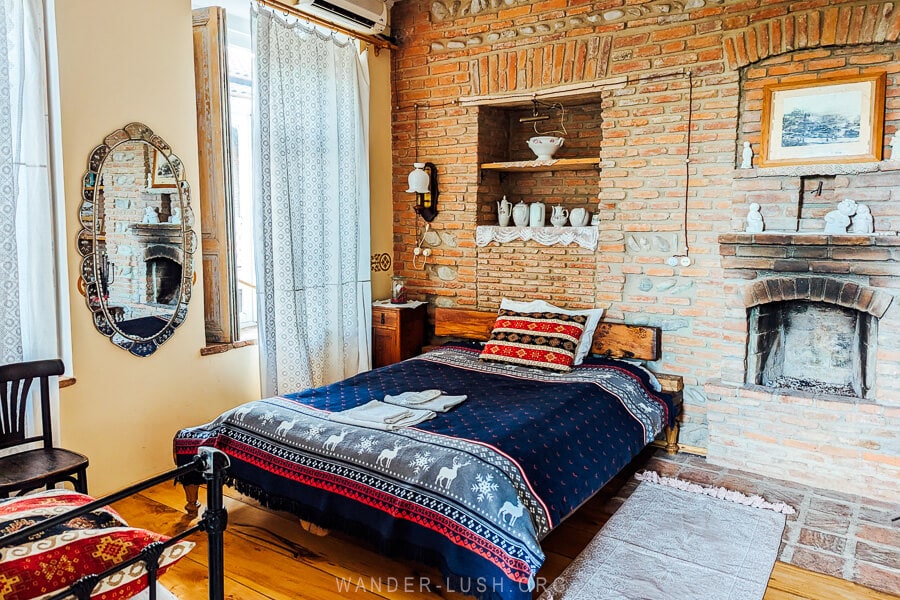
Where to stay in Kakheti
Sighnaghi and Telavi are far and away the most popular places to base a visit to the wine region. Normally I recommend that first-time visitors stay in Sighnaghi, but having recently spent more time in Telavi, my opinion has changed.
There are more accommodation options in Telavi, more restaurants and wine bars (with ‘more local’ prices), and since there is a large bus station in Telavi, better transport connections too. Moreover, Telavi is better positioned within the valley for sightseeing. Sighnaghi sits on top of a hill, meaning you have to travel at least 20 minutes before you reach the closest vineyards. Telavi is surrounded by vineyards and in closer proximity to the area’s must-see monasteries.
At the end of the day it’s a personal choice. If you want the romance of the walled town and you don’t mind staying somewhere quite touristy, then Sighnaghi is a great choice. If you want something with a more local vibe, consider Telavi.
Another option is to stay on a vineyard or at a heritage wine chateau somewhere between Sighnaghi and Telavi. I highly recommend you spend at least one night in the vineyards if you have time. The 5-star Radisson Tsinandali is a bit of a splurge but absolutely worth it.
→ My detailed guide to where to stay in Kakheti includes a breakdown of the different areas and accommodation options for every budget.
Here are quick links to my favourites:
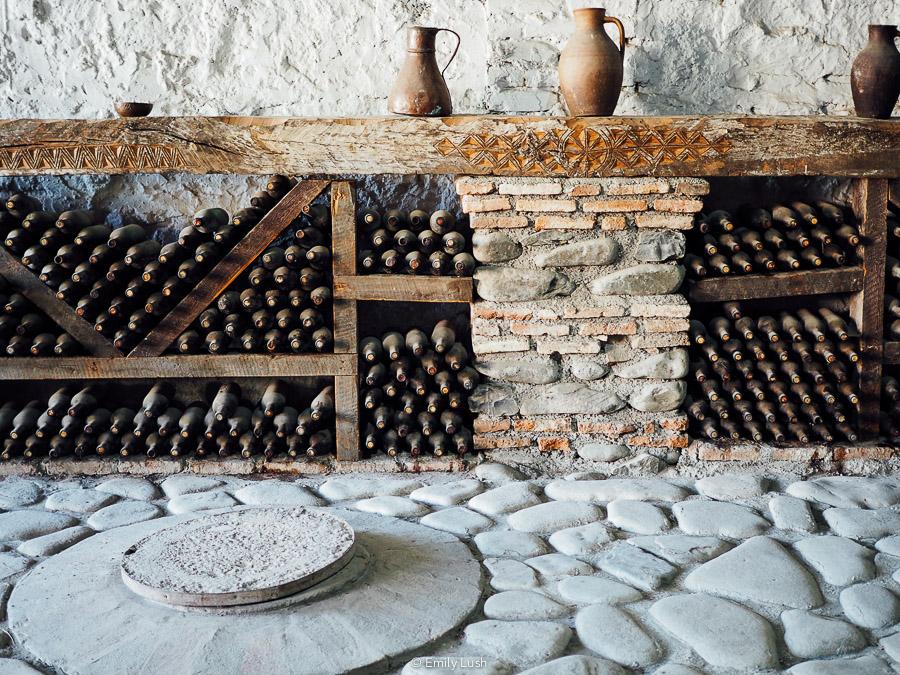
Tips for visiting vineyards for a Kakheti wine tasting
Kakheti’s wineries are quite diverse and the experience differs depending on the size and type of operation.
Larger commercial wineries (Khareba, Kindzmarauli, Shumi, etc.) are usually better-equipped for tourism and able to accept walk-ins without an advance booking. They typically charge a fee (30-50 GEL) for a tour of the facilities and a tasting of 3-4 wines plus chacha. Though more touristy and less personal, it’s still a fun experience. On a handful of occasions I’ve visited mid-sized wineries where the tasting was complimentary but the expectation to buy a bottle at the end was quite intense.
Smaller family wineries are less formal and so rarely take walk-ins. You should therefore give them at least 1-2 days notice if you plan to visit. English might not be spoken, and without a guide to interpret, it can be tricker to understand what’s going on. But the language of wine usually wins in the end and the experience is more rewarding. Smaller wineries might open later (around midday) compared to bigger wineries that open at 9 or 10am, so keep this in mind when planning your itinerary.
→ Make the most of your visit: check out these general wine-tasting tips from Everyday Wanderer.
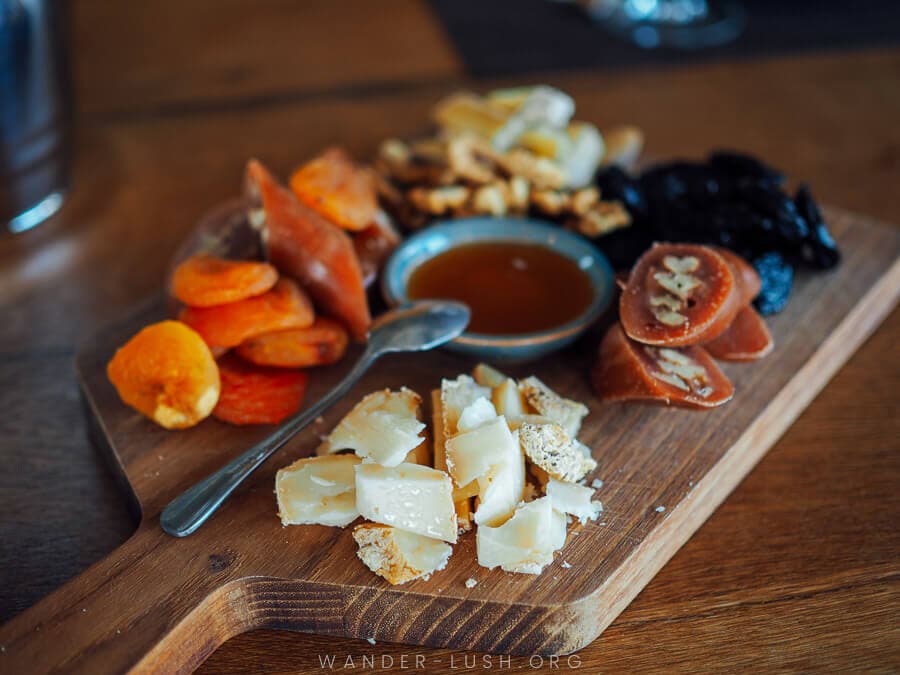
What to wear & bring with you
When you’re out winery-hopping, it’s essential to bring drinking water and a snack with you as there won’t always be time to stop.
If you’re going to be outside in the vineyards, sitting on an outdoor terrace or just walking through monastery grounds, sun protection gear is necessary no matter the season. A light jacket or scarf also comes in handy as some cellars (especially Khareba) are quite chilly inside.
The church dress code is strictly enforced in rural Kakheti so wear long trousers (men) and bring a lightweight scarf to cover your hair (ladies). Wrap-around apron skirts and headscarves are available at the entrance to every church/monastery if you need to borrow one.
→ Check my Georgia packing list for more recommendations on what to wear in Tbilisi and Georgia.

How much should you budget for Kakheti?
Food and accommodation prices in Telavi are comparable to other parts of Georgia – which is to say, very affordable – but Sighnaghi is a little more expensive. The other major expenses you need to budget for are a car/driver and the entrance fees that bigger wineries charge. All monasteries and churches are free to visit.
If you’re staying in a mid-range hotel or guesthouse, eating out twice a day and using private cars to get around, I would recommend budgeting 60-80 USD per person per day for Kakheti.
→ See my Georgia budget guide for more money tips.
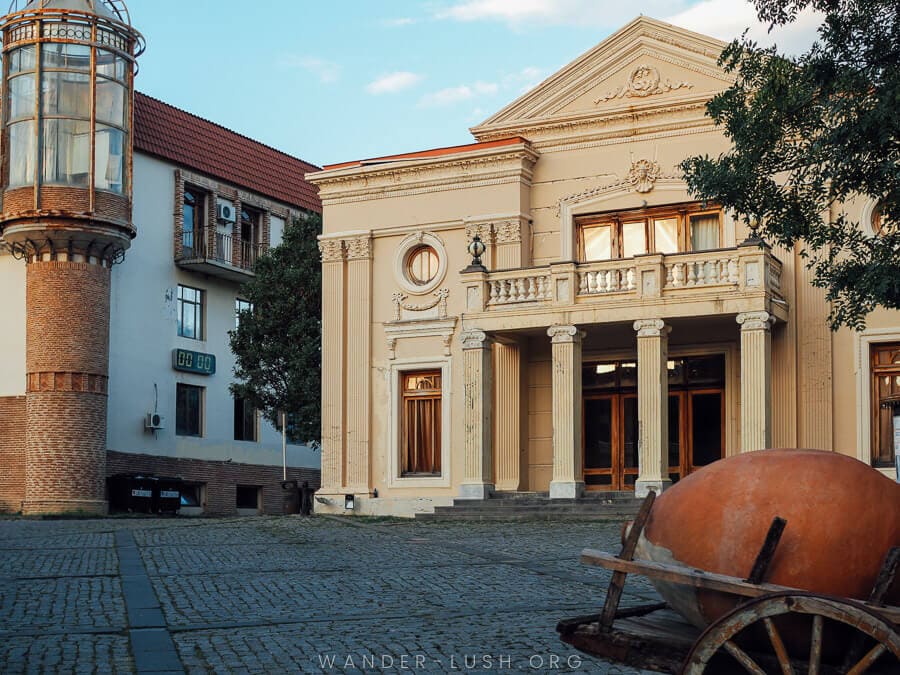
Things to do in Sighnaghi & Telavi: The perfect Kakheti itinerary
The wine region is spread out over a large area so you do need to be organised ahead of time if you want to hit everything on your wish list.
Three full days in Kakheti is the ideal amount of time for a slower-paced exploration of the wine route. You could easily condense this itinerary into one or two days, moving at a faster pace and sacrificing some stops. I’ve provided some alternative itinerary options at the end.
This Kakheti itinerary starts in Sighnaghi, which is easy to access from Tbilisi, and ends in Telavi, a more convenient transport hub with onward connections to other parts of Kakheti beyond the wine region including Tusheti, Pankisi Valley and Lagodekhi National Park.
Day 1: Sighnaghi & Bodbe Convent – Overnight in Sighnaghi
Day 2: South-eastern Alazani wineries & monasteries – Overnight in Telavi or Tsinandali
Day 3: North-western Alazani wineries & monasteries + Telavi – Overnight in Telavi
You can easily reverse this itinerary to start in Telavi and finish in Sighnaghi, entering Kakheti via the Gombori Pass.
It might not be possible to fit in everything I’ve mentioned here, so I’ve used this key to help you be more selective:
*** – Don’t skip it
** – Worth seeing
* – Only if you have time
Kakheti itinerary map
Click here to open my interactive Kakheti map on Google Maps.
Day 1: Sighnaghi
If you’re coming from Tbilisi via the Kakheti Highway (recommended if you’re spending your first night in Sighnaghi), then you can start your wine tasting adventure as soon as you enter the region.
Ninotsminda, Sagarejo & Manavi
This itinerary starts from the moment you cross into Kakheti region!
Most wineries along the highway are very commercial but there are a couple of good ones before you reach Sighnaghi, including Giuaani Winery and Vallino Wine Cellar. Giuaani in Manavi village has particularly lovely grounds and knowledgeable staff. Tour and tasting packages start from 35 GEL per person (see the full program here).
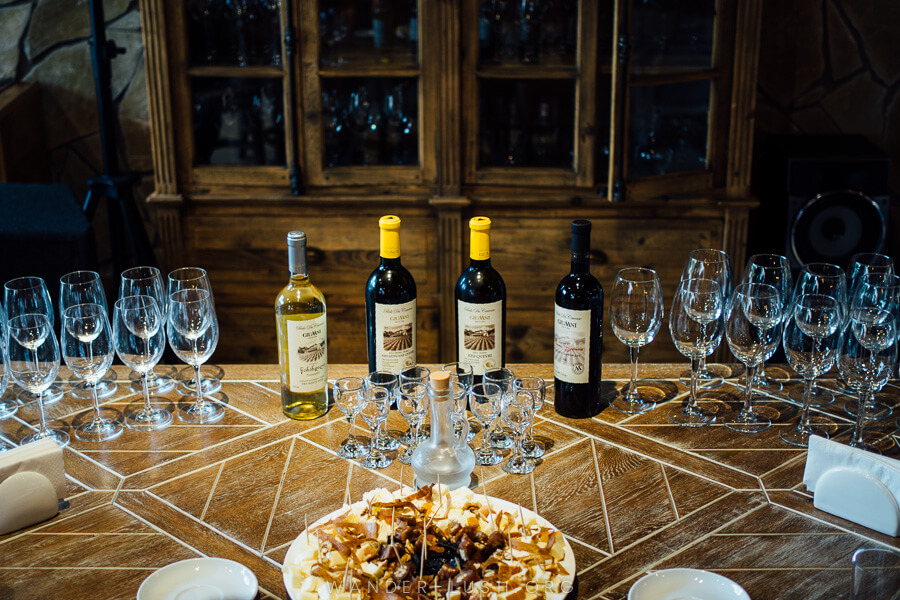
I also recommend making a short detour to Ninotsminda Cathedral in the town of Sagarejo. The complex comprises the ruins of an impressive cathedral (partially eroded frescoes still intact) and a tiny chapel with a wood-burning stove in the corner.
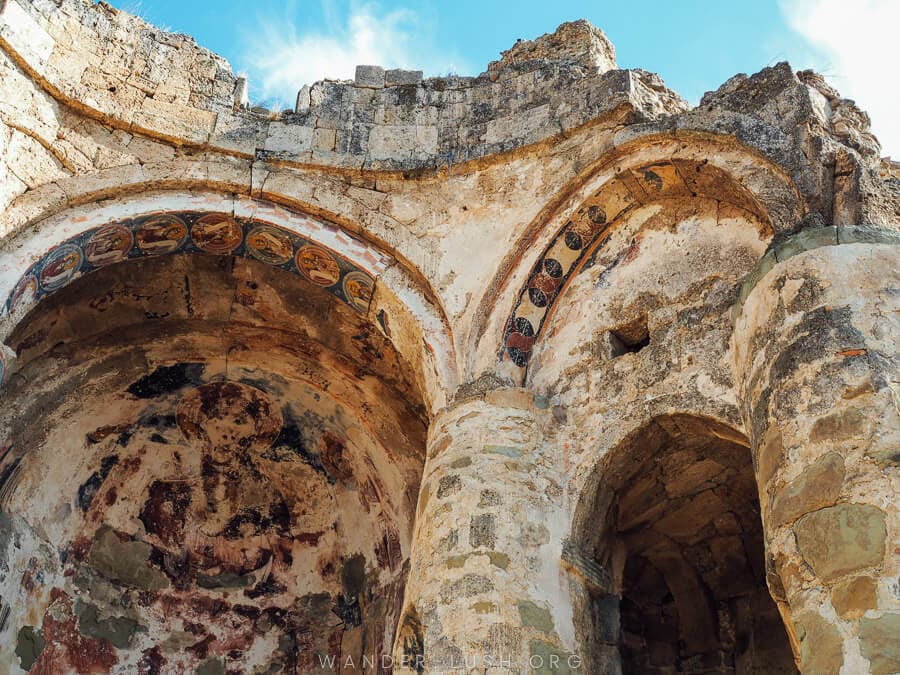
If you’re into Soviet history, you might also want to stop at the abandoned wine factory in Sagarejo. The building is boarded up, but there are some lovely relief sculptures that you can see on the front facade.
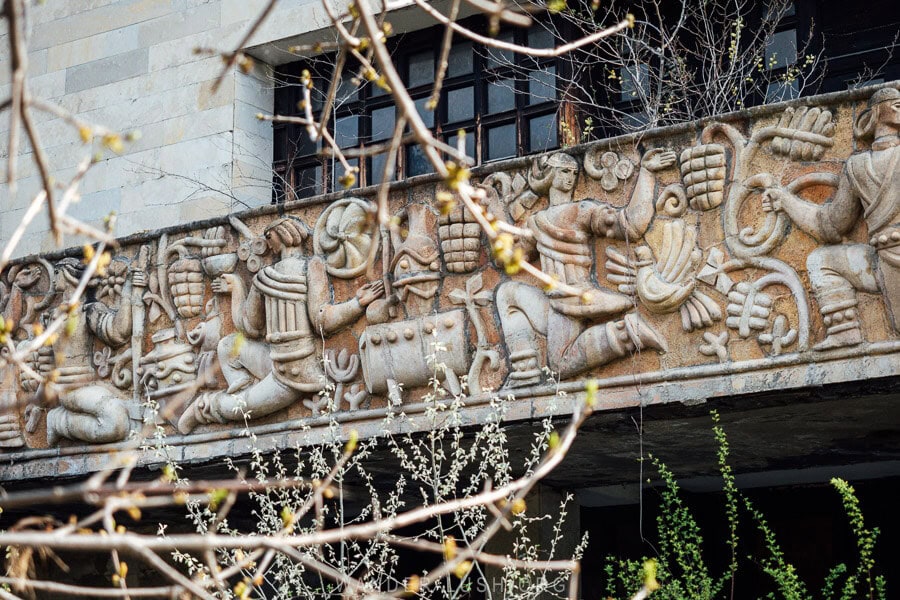
Nukriani
Nukriani village is located just after the turn-off for Sighnaghi. Once you pass through the Gate of Kiziqi, you will see a wooded picnic area on the side of the road. Stop here for a quick walk out to the plateau to view the incredible sculpture Peace by Nugzar Manjaparashvili. The very-Soviet 1970s artwork might be a bit worse for wear, but it is still one of the most impressive sculptures I have ever seen in my life.
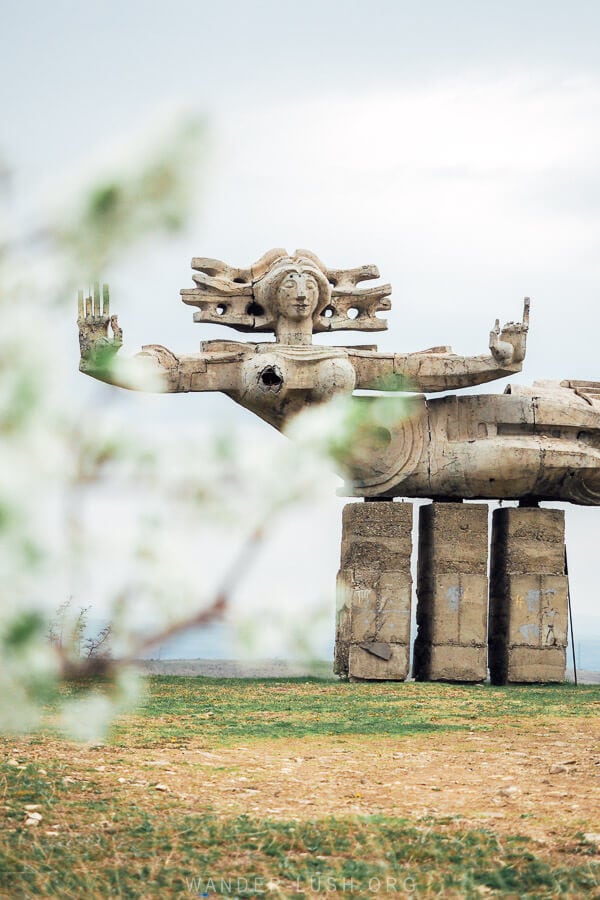
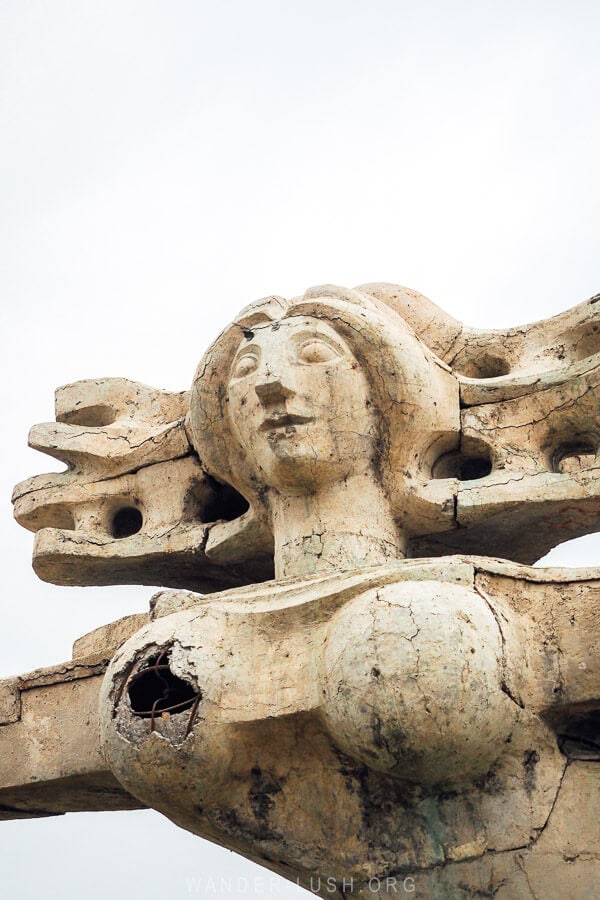
Nearby, the popular Dergi restaurant, run by Georgian celebrity chef Levan Kobiashvili, is the ideal place for an early lunch before you arrive in Sighnaghi. This place is famous for its khinkali dumplings and I can confirm that they are very good!

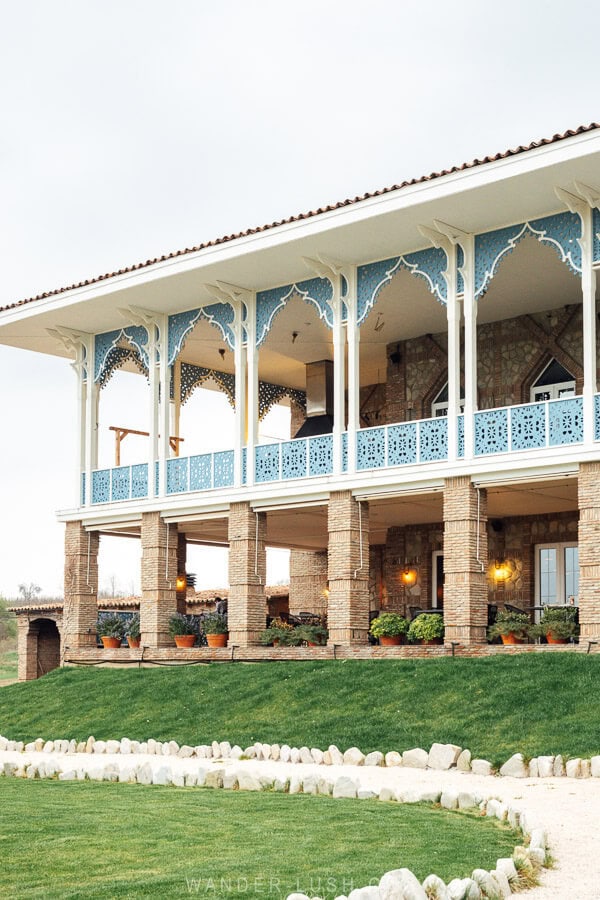
If it’s the right season, you could also consider stopping off at the Nukriani Lavender Farm in Nukriani to frolic in the fields. Back towards Tbilisi, the Sartichala sunflower fields are home to another famous Kakhetian crop – sunflowers used for making cold-pressed Kakhetian oil.
Things to do in Sighnaghi
A Soviet-era sign welcomes you into charming Sighnaghi proper. Check into your accommodation and spend the first afternoon of your Kakheti itinerary sightseeing in town – there is plenty to do within walking distance of the centre.
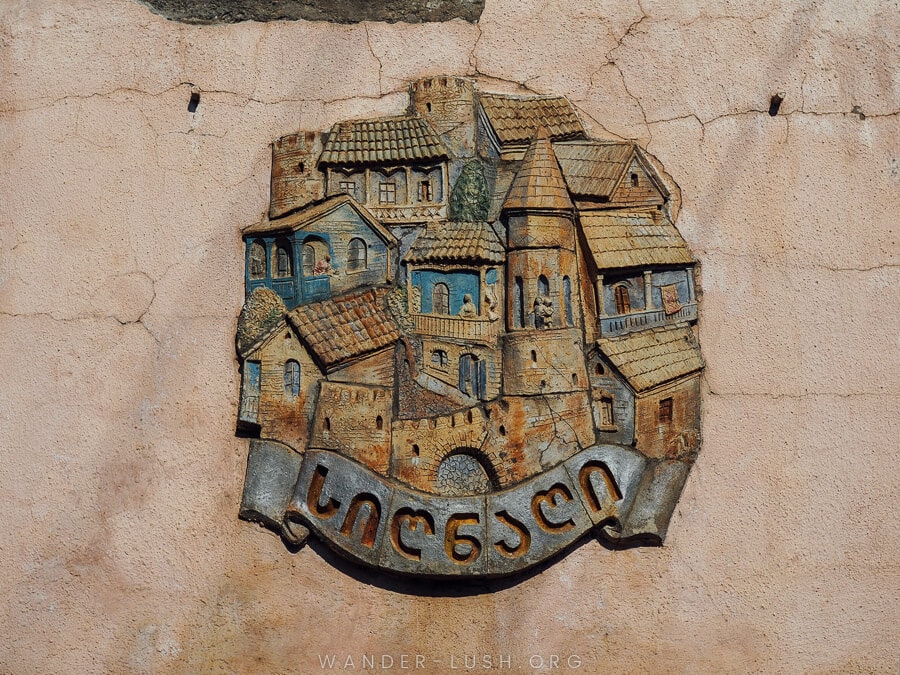
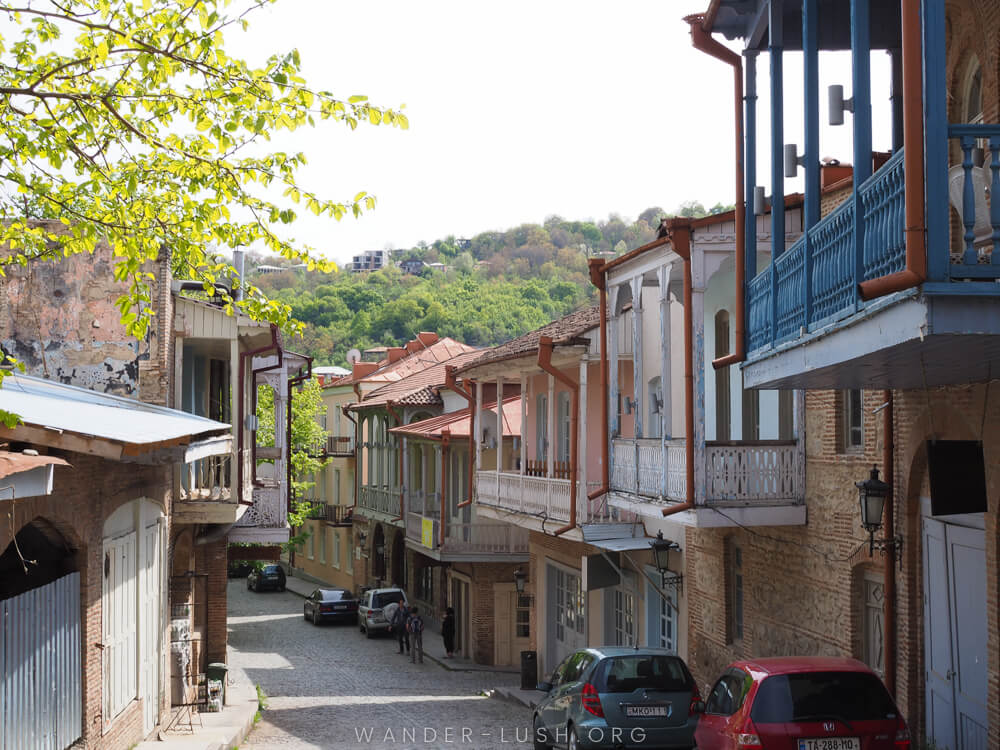
If it’s a weekend, you’ll no doubt notice drivers careering around the hilly roads and leaning on their horns. This is a tradition in Sighnaghi, ‘the city of love’, where there’s a wedding on every other day, and cars carrying the bridal party honk incessantly for good luck.
Who can blame them – this is an incredibly romantic little town.
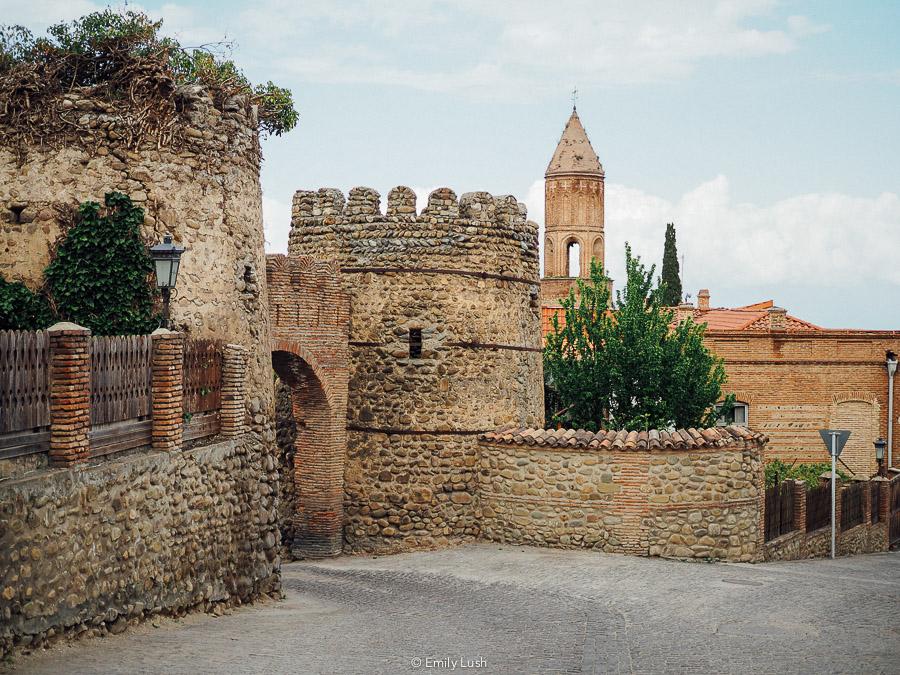
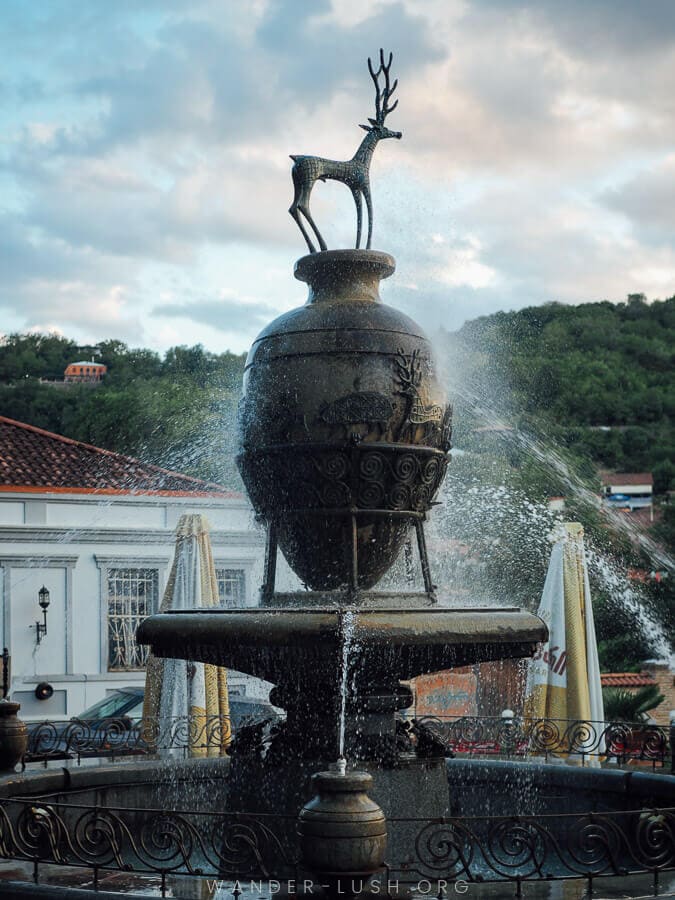

*** Alazani Valley views
From its hilltop perch, Sighnaghi overlooks the patchwork fields of the Alazani Valley and the snowy peaks of the Greater Caucasus. From some vantages you get a panoramic view of the landscape with Sighnaghi’s red rooftops and bell tower in the foreground.
The views are typically best in the early morning or at sunset when the sky is clear. My favourite viewpoints in the centre of Sighnaghi are from:
- The terrace behind the National Museum (see below)
- The fork in the road at Lolashvili Street
- The terraced restaurants at the top of Lolashvili Street
- The road to Bodbe Monastery
- The tower adjacent to St. Stephen Church (see below)
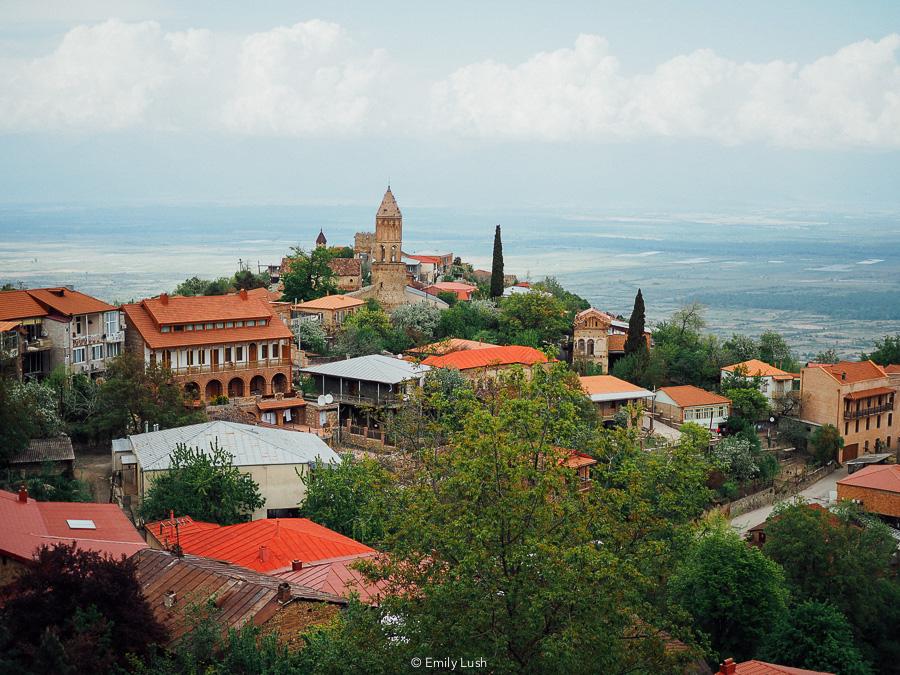
*** Sighnaghi Wall
Sighnaghi is encased by stone walls, with several towers and grand arched gates on the northern and western sides. Built to fortify the town in 1762 and later reconstructed, you can climb up onto the wall at this point and teeter along the top for views of the low-lying town of Tsnori and the valley basin.
It’s best to arrive early in the morning before the tour buses arrive or alternatively around lunch time.
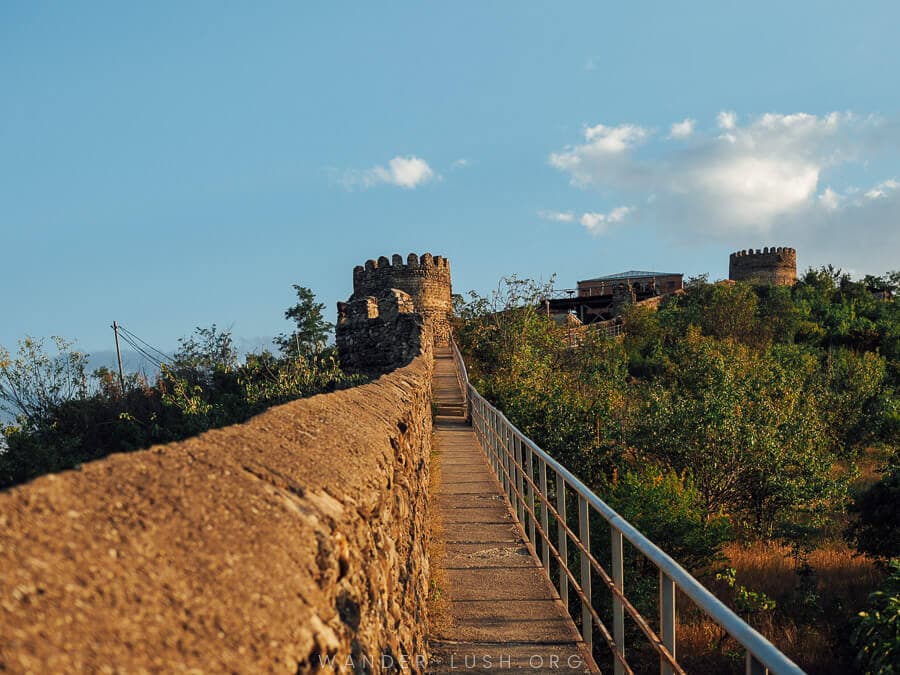
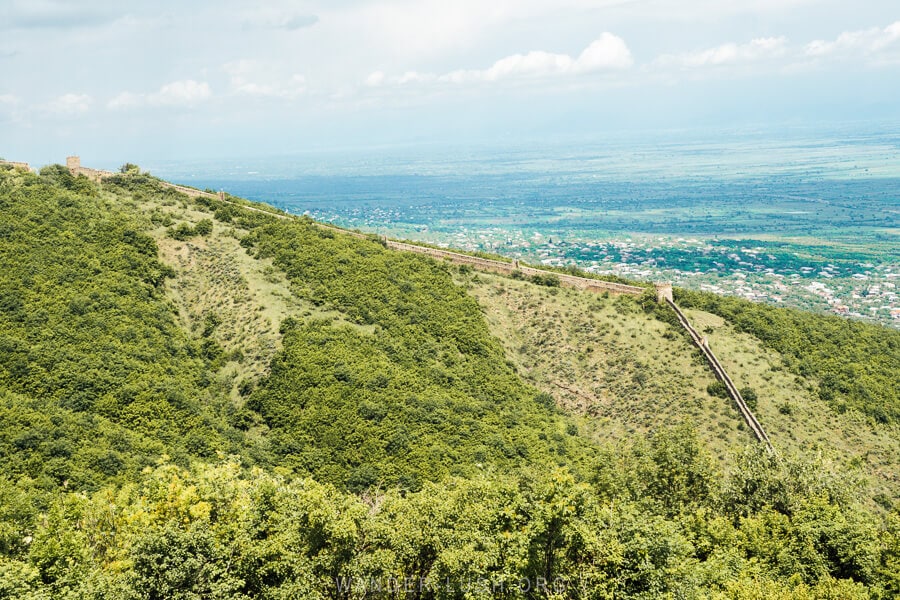
** The knitting ladies
On the cobbled streets around the city gate you’ll see several little shops selling chunky wool socks and other cute Georgian souvenirs. The knitting ladies sit out front clicking their needles and are more than happy to pose for a photo.
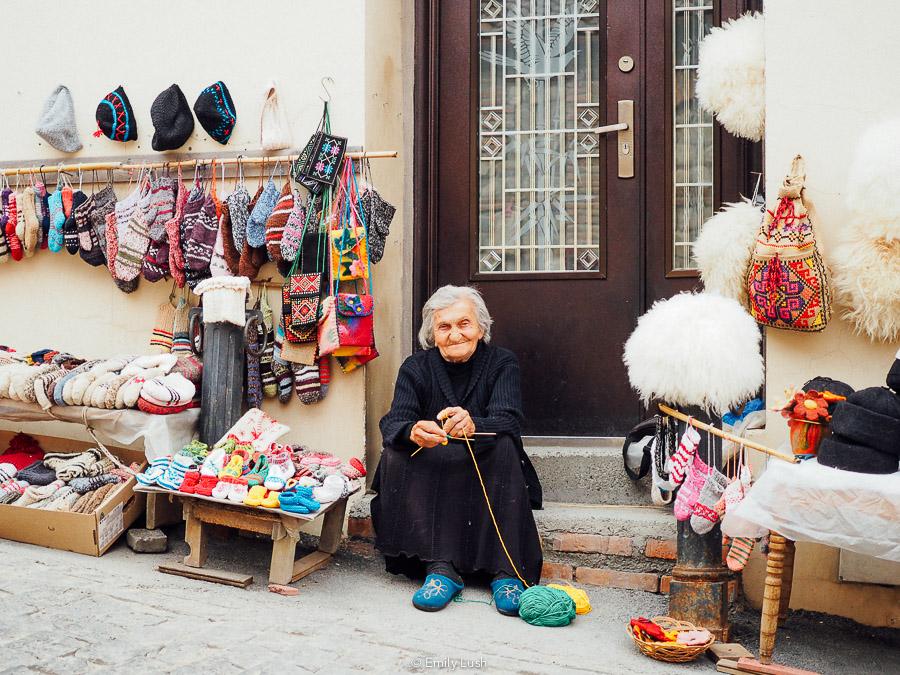
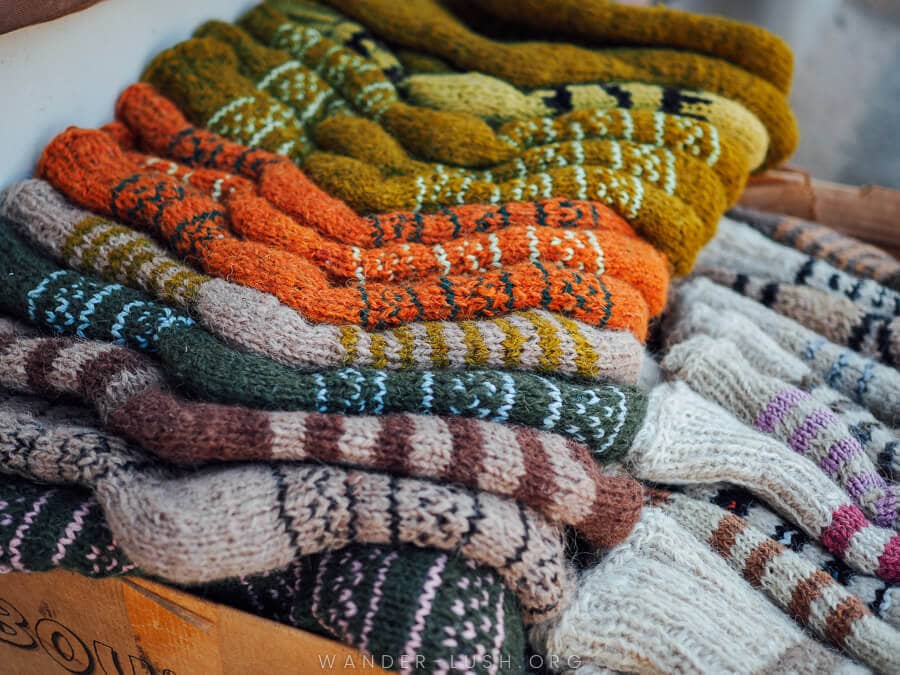
* St. George Basilica
This church in the lower part of Sighnaghi is topped with the stone bell tower you see in most photos of the town. It’s worth popping in for a quick look around the chapel if you’re passing by. Entrance is free, but in my experience the door is usually locked.
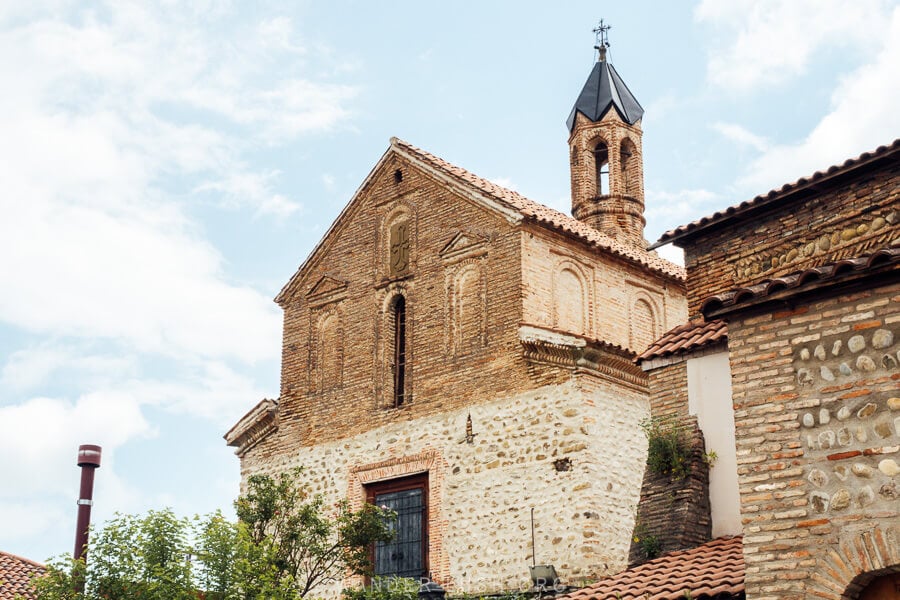
*** St. Stephen’s Church & Tower of Sighnaghi Wall
This lesser-visited church is located in the upper part of town. With some careful footwork, you can climb onto the roof for a beautiful view (and a great photo).
Ignore Google Maps (it’s pinned in the wrong place) – instead, follow the steep street up to Burji then take the narrow iron staircase in front of the restaurant to access the church. You can’t miss it. Entrance costs 1 GEL.
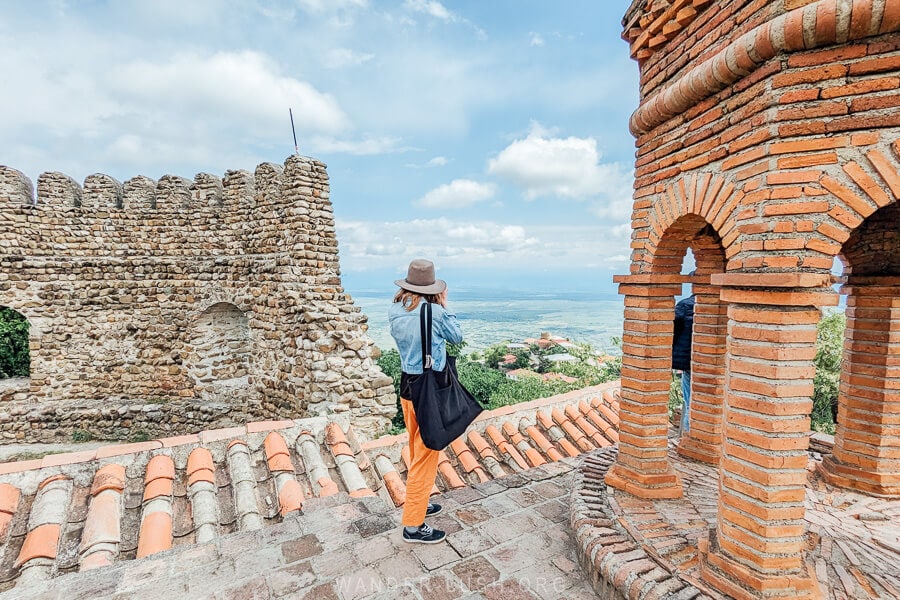
** Sighnaghi National Museum
Founded in 1947, this small local museum above the park is worth a walk through if only to view the large collection of paintings by Niko Pirosmani, Georgia’s national artist, who hailed from Kakheti. (If you’ve eaten at the Samikitno restaurants in Tbilisi, you’ll recognise some of his works.)
Recently a bunch of new paintings were relocated to the museum from Mirzaani, Pirosmani’s ancestral village. I love Pirosmani’s style, especially his depictions of animals. Here at the museum, a scene from the Rtveli wine harvest takes pride of place. Other exhibits showcase ethnographic objects and coins.
The museum is open from 10am-6pm Tuesday to Sunday (closed on Mondays). Entrance costs 20 GEL.
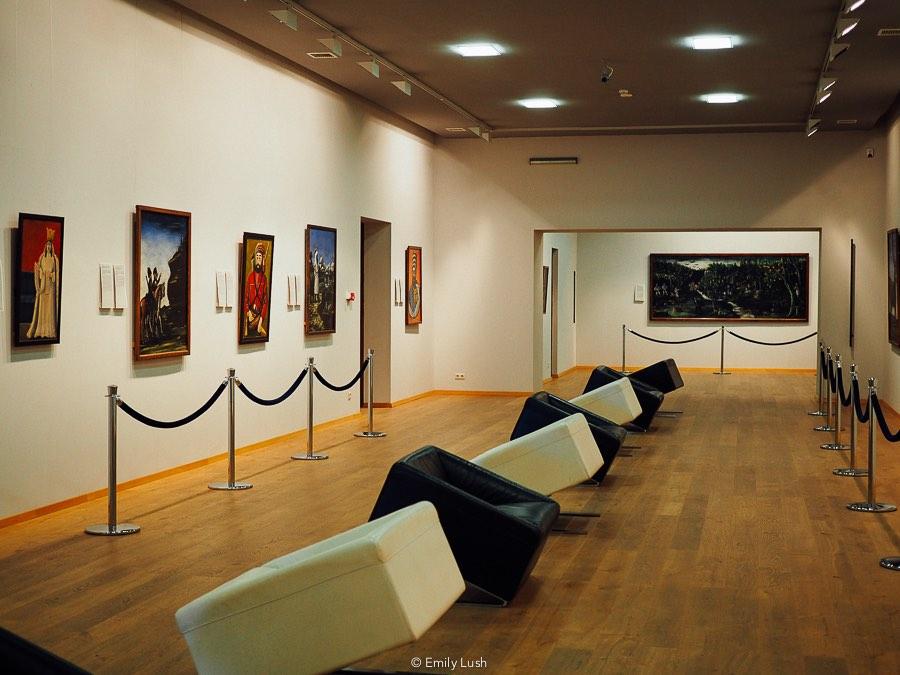
** Sighnaghi park & WWII memorial
The park below the museum is a nice place for a quick stroll, especially in the summer months when you’ll find stalls selling homemade Churchkhela, wine and other treats.
A huge Soviet-style WWII Memorial on one side depicts battle scenes and winemaking traditions side by side, with vignettes of Sighnaghi town and inscriptions of the names of soldiers from the Sighnaghi Municipality who lost their lives in the Great Patriotic War.

*** Bodbe St. Nino’s Convent (20 minutes on foot from Sighnaghi)
Bodbe Convent (open daily from 10am until 6.30pm) is a one-kilometre walk from the fringe of the town, with spectacular views of Sighnaghi’s red roofs, city wall and the valley all along the way.
Bodbe probably has the best-kept grounds of any monastery in Georgia. When I mentioned this to a Georgian friend, she told me the reason: It’s nuns, not monks, who live here and are responsible for tending the gardens. A woman’s touch!
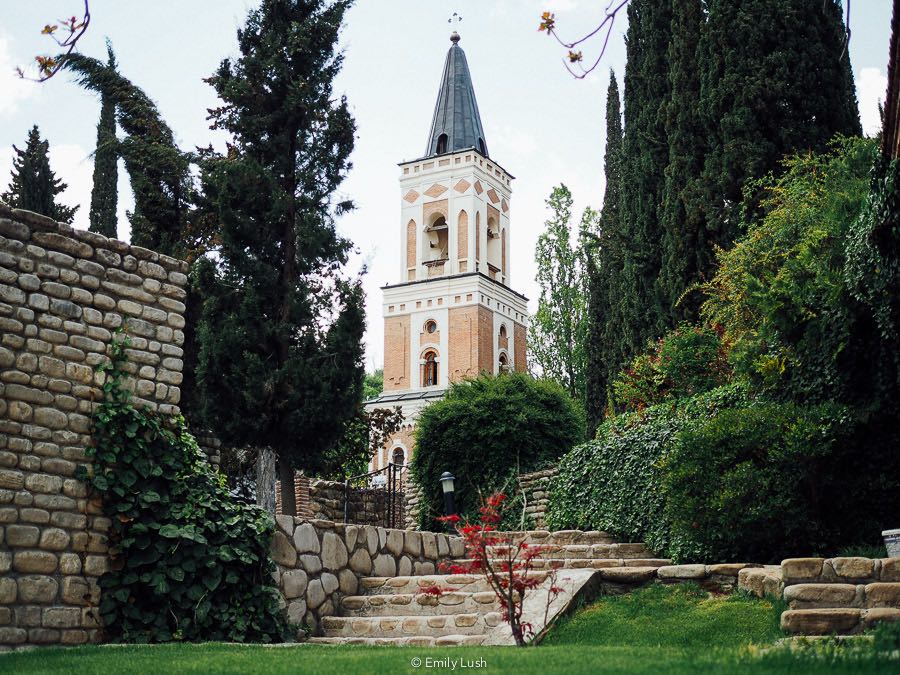
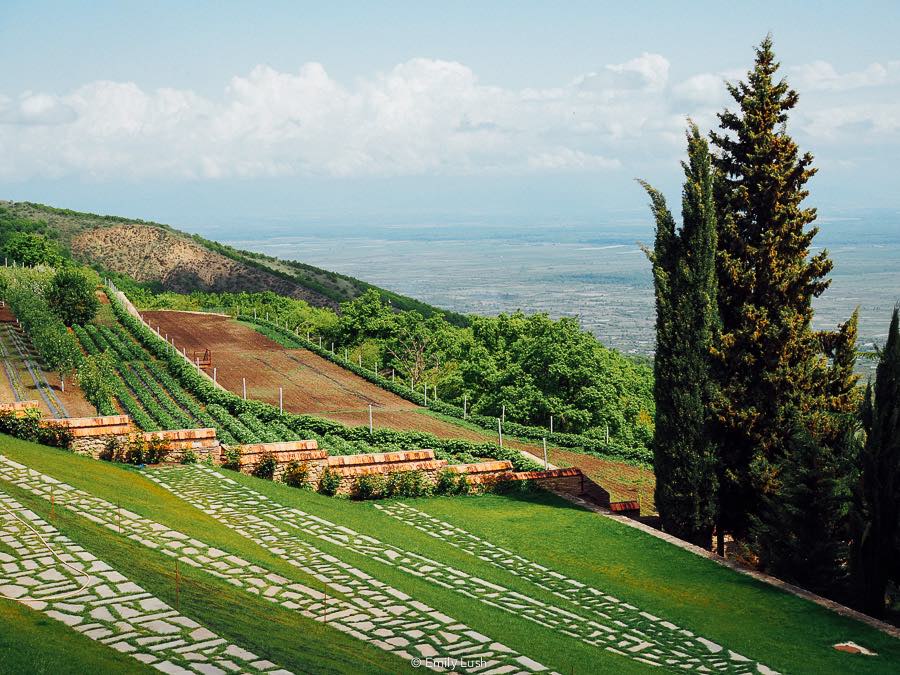
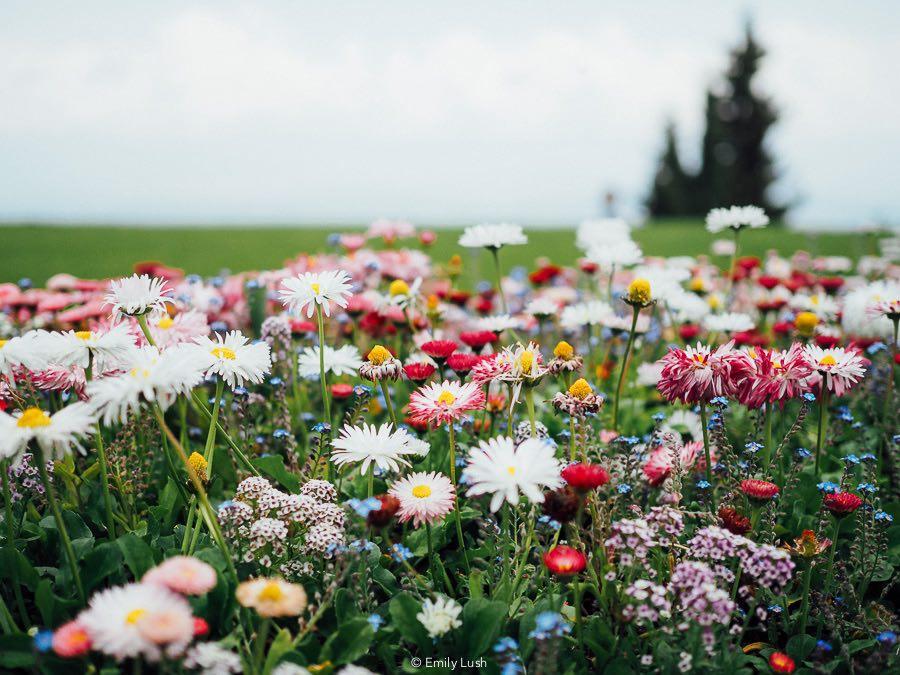
Once you’ve admired the chapel and meticulously tended flower beds, follow the steps down to St. Nino’s Spring, where pilgrims kick off their boots to bathe in the holy water.
Return back to town the same way you came, pausing at the top of 9 April Street (near Pheasant’s Tears) for a great view of the town’s prettiest balconied houses. Or you can take a shortcut and use the zipline.
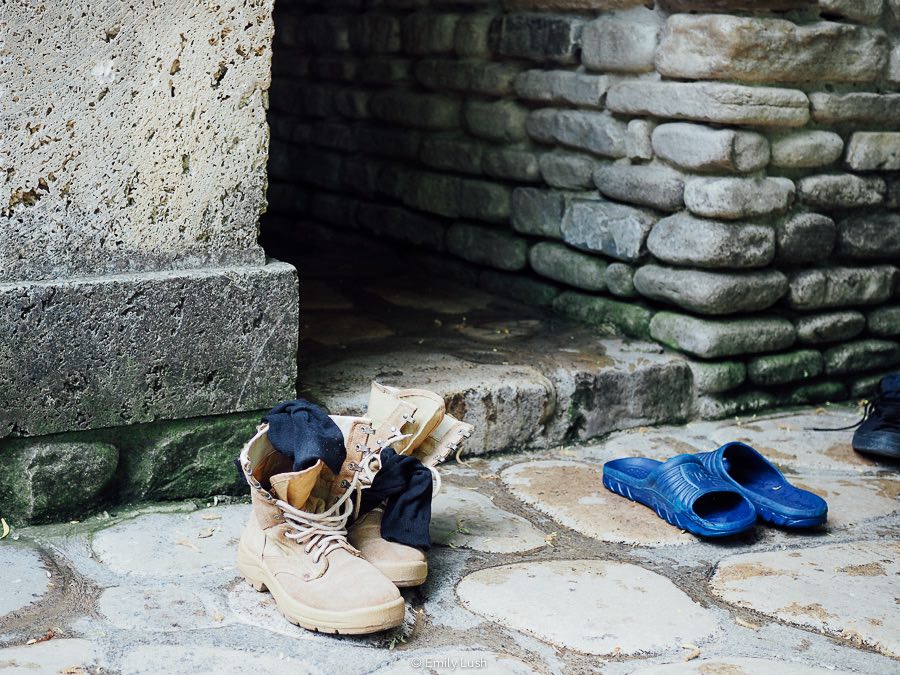
* Horseback riding or a craft beer tasting at Lost Ridge (10 minutes by taxi from Sighnaghi)
Horseback riding is a terrific way to experience a different side of Sighnaghi, away from the old town and immersed in the area’s nature. Lost Ridge keeps 15 horses and offers short and full-day rides around the area accompanied by English-speaking guides. Tours depart from the ranch in Qedeli, just past Bodbe.
The property also has an onsite brewery where they make their own craft beer with local botanicals. Tours of the small facility and tastings can also be arranged for walk-in guests.
Contact Lost Ridge in advance to arrange a time.
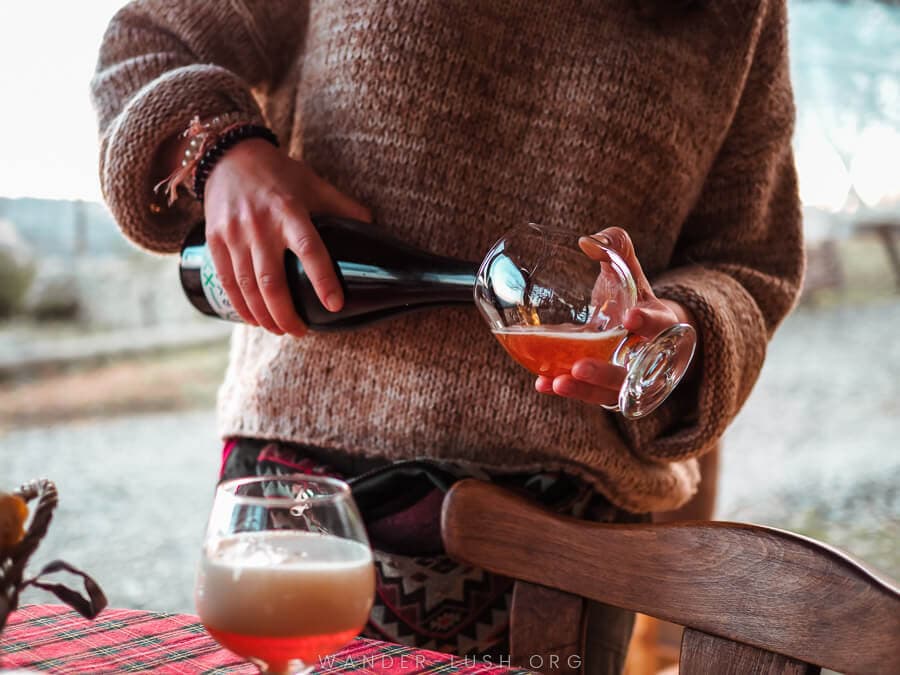
** Wine degustation at Cradle of Wine Marani
This small cellar in the centre of Sighnaghi offers sit-down Qvevri and natural wine tastings on a beautiful wooden balcony overlooking town. A degustation costs around 40 GEL per person and includes six wines accompanied by local cheeses and other nibbles.
Host Paul will walk you through the winemaking process, show you the family cellar, and can also organise a full Georgian lunch or dinner on request. Tastings are typically scheduled for 1pm, 3pm and 5pm. Advance bookings are essential. More info and contact details here.
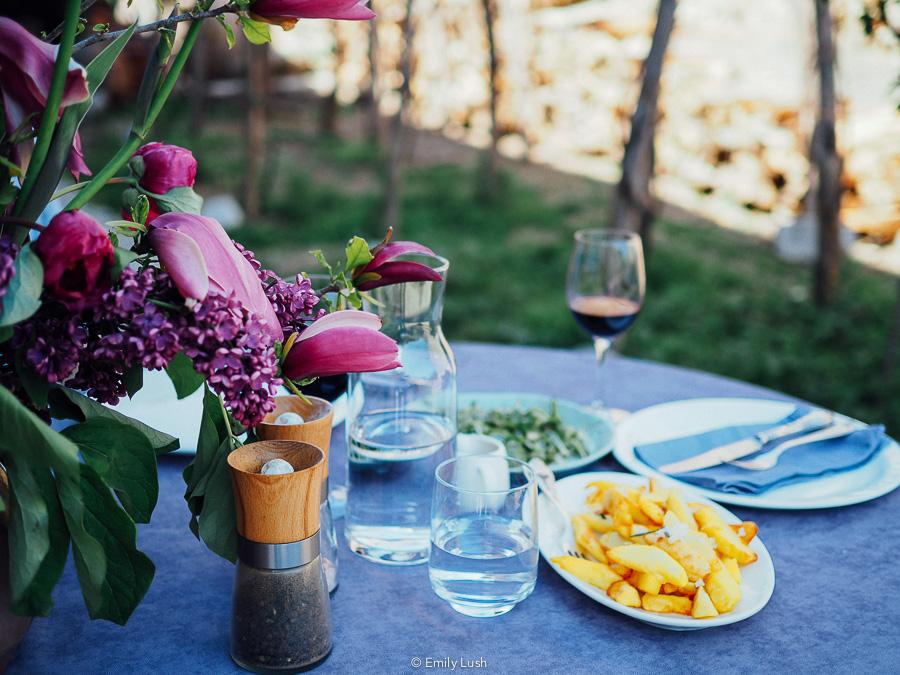
Where to eat & drink in Sighnaghi
Pheasant’s Tears: One of Kakheti’s best-known wineries (and Georgia’s leading natural wine labels), Pheasant’s Tears operates a restaurant in the centre of Sighnaghi. Meals are rustic and rootsy, artfully prepared from local and seasonal produce and accompanied by wine by the glass or bottle. Both the large dining room and terrace fill up fast (especially on weekends) so reservations are essential. More info & hours here.
Okro’s Natural Wine Restaurant: Georgian fare and house wines served on a balcony with spectacular views of the valley. Alongside an a la carte lunch and dinner menu, wine tastings and cheese plates are also available. The family’s cellar is onsite and you can buy bottles here to take home. Reservations are recommended. More info & hours here.
Lali: This guesthouse also serves home-cooked Georgian meals (the BBQ comes highly recommended) and offers a wine tasting for 10 GEL. More info & hours here.
Pancho Villa: If you need a break from Khinkali, this restaurant in the old part of Sighnaghi serves excellent Tex-Mex. Try the Saperavi dessert, an ingenious sponge and cream cake flavoured with syrup made from local grapes, and the Mexican coffee with cinnamon and cardamom. More info & hours here.
Lost Ridge Inn (10 minutes by taxi from Sighnaghi): Rustic meals made with garden-fresh ingredients and craft beer tastings served under a Linden tree overlooking the valley. Bookings are essential. More info & hours here.
The Crazy Pomegranate (20 minutes by taxi from Sighnaghi): The onsite restaurant at Pheasant’s Tears Winery in Tibaani specialises in organic seasonal and local produce. Wine tastings are also available on the terrace overlooking the vineyards. Advance bookings are essential. More info & hours here.
Day 2: South-eastern Alazani Valley
Extend your time in Sighnaghi: If you have the time, there is a lot more to see in the vicinity of Sighnaghi and to the south, including Knowledge Cafe in Tsnori, the Bodbiskhevi Sunday Bazar, the Arboshiki WWII Memorial, and Machkhaani village. For something different, you can head deeper into Kakheti to the town of Dedoplistskaro for birdwatching in Eagle Gorge, visiting the Soviet airfield at Big Shiraki, and off-roading at in Vashlovani National Park.
For this Kakheti itinerary, you will spend the second day exploring the wineries and monasteries around Sighnaghi and Gurjaani. Ask your guesthouse to organise a full-day tour or book a driver through GoTrip. Then sit back and enjoy the drive!
Depending on how early you get going (and how much chacha – Georgian hard liquor – you can handle), you can expect to fit in 4-5 monasteries/churches plus 2 or 3 wineries. This route requires a total of 3-3.5 hours in the car, with lots of photo stops in between and magnificent scenery the entire way.
Start by heading north towards Telavi then crossing over to the opposite side of the river. I recommend taking your luggage with you and getting dropped off in either Tsinandali or Telavi at the end of the day to avoid doubling back to Sighnaghi.
Gurjaani
Gurjaani is a small city 40 minutes from Sighnaghi on the Alazani River Plain. Though not an essential stop, it’s a great place to spend an hour before the wineries further down the valley open their doors.
During Soviet times, Gurjaani was a busy industrial town with a wine factory, canning facility and brick-making plant. It was – and still is – home to the single biggest wine factory in Georgia.
Reminders of the Soviet period live on in the many memorials and mosaics around town, while the nearby Akhtala volcanic mud baths still attract visitors for balneotherapy treatments.
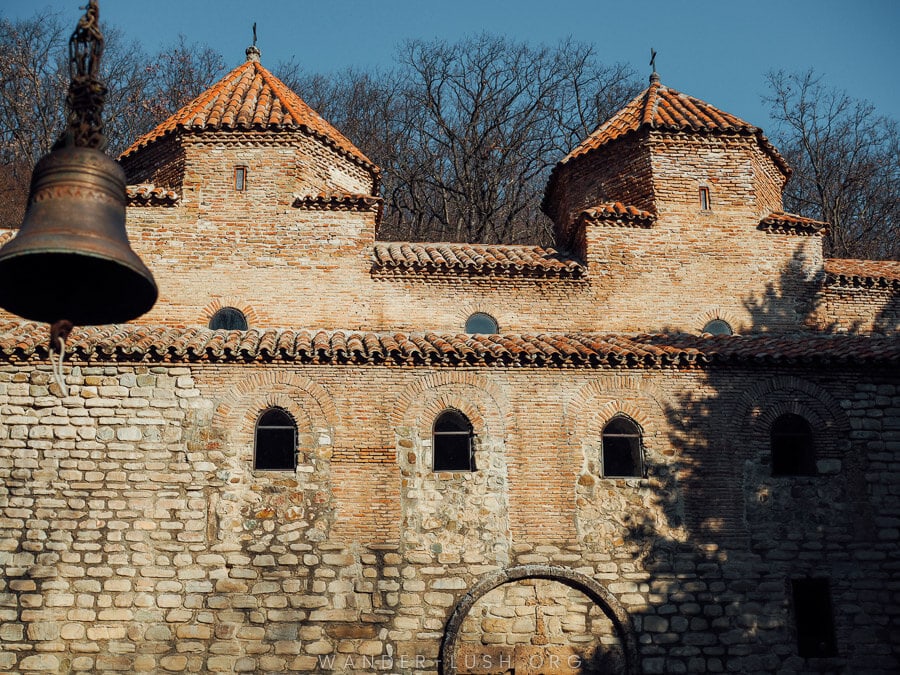
** Gurjaani Kvelatsminda
Built in the 8th or 9th century, this is the only church in Georgia with a double-dome design. It was restored in 2010 after being ransacked by Persian and Dagestani invaders in the 17th century then lying abandoned for many decades.
The church is nestled in a forest back from the road and reached via a very pleasant shaded path. The walk is a lovely way to start your morning. At the entrance you’ll find a church shop selling handicrafts and local honey.
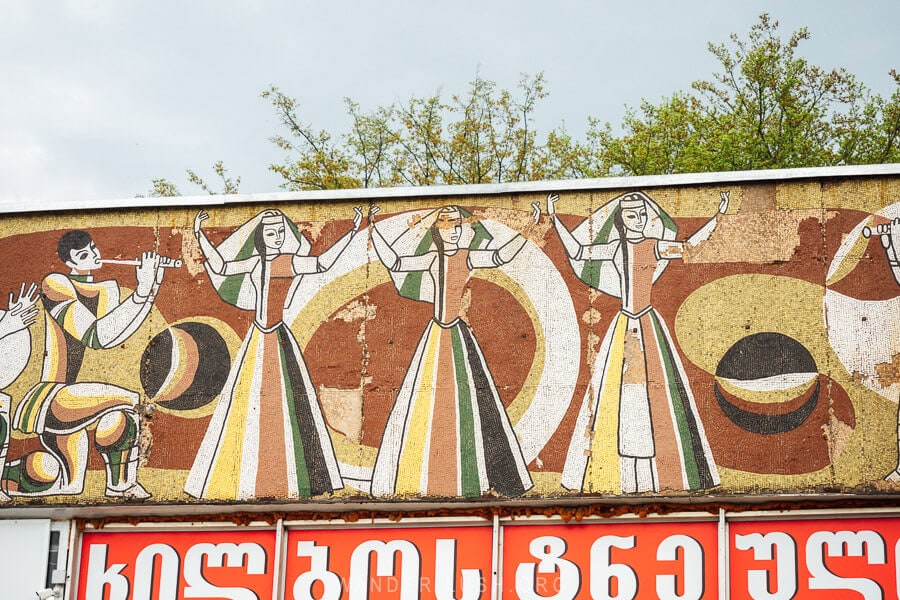
** Gurjaani bus stop mosaic
If you’re interested in Soviet-era mosaics, make a quick photo stop at this former bus station in Gurjaani. The top of the large complex is wrapped in a very detailed mosaic depicting typical wine harvest scenes, folk instruments and dance.
The mosaic was completed in 1985 and is the work of Leonardo Shengeli and Enriko Kopadze. Unfortunately the left-hand panel is now obscured by another building, but the front part of the mosaic is fully visible and in good condition.
If you skipped your morning coffee, there is a small coffee shop on the far right.
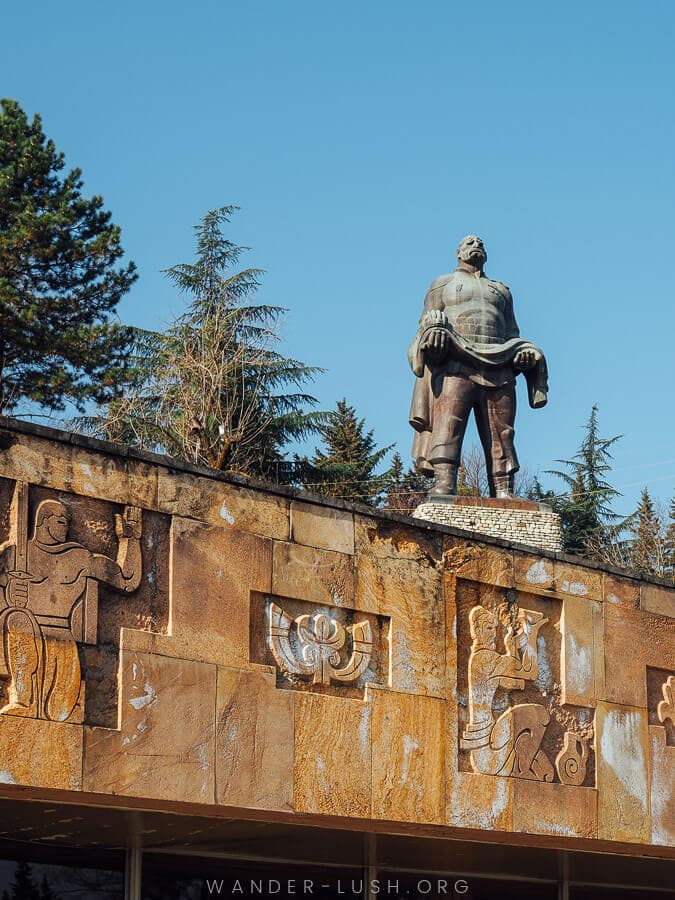
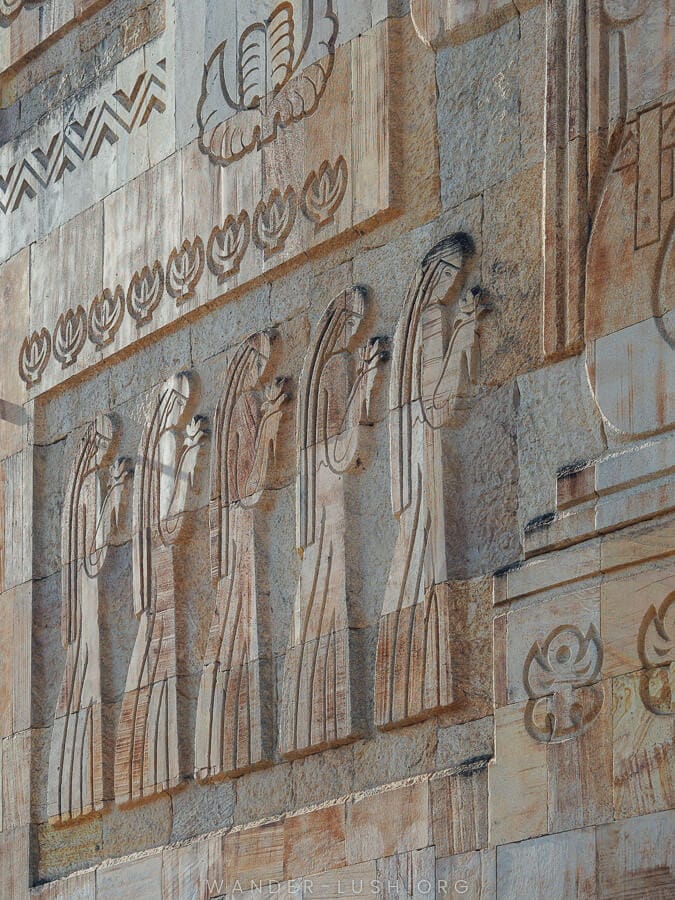
* Soldier’s Father Monument, the Memorial of Glory & Museum
Another 1970s throwback, the Gurjaani Glory Memorial Museum is a huge outdoor amphitheatre-cum-war memorial with a detailed Soviet-style frieze, an indoor exhibition hall, and an ‘Eternity Wall’ that bears the names of the 4,000 Gurjaani locals who lost their lives in WWII.
A larger-than-life sculpture by Merab Berdzenishvili titled Statue of Soldier’s Father overlooks the hilltop complex.
If you’re lucky enough to find the museum open (officially from 10am-6pm Tuesday to Sunday) then it is worth paying the 3 GEL entry fee to see the exhibition of canvases, old canvases and war memorabilia inside.
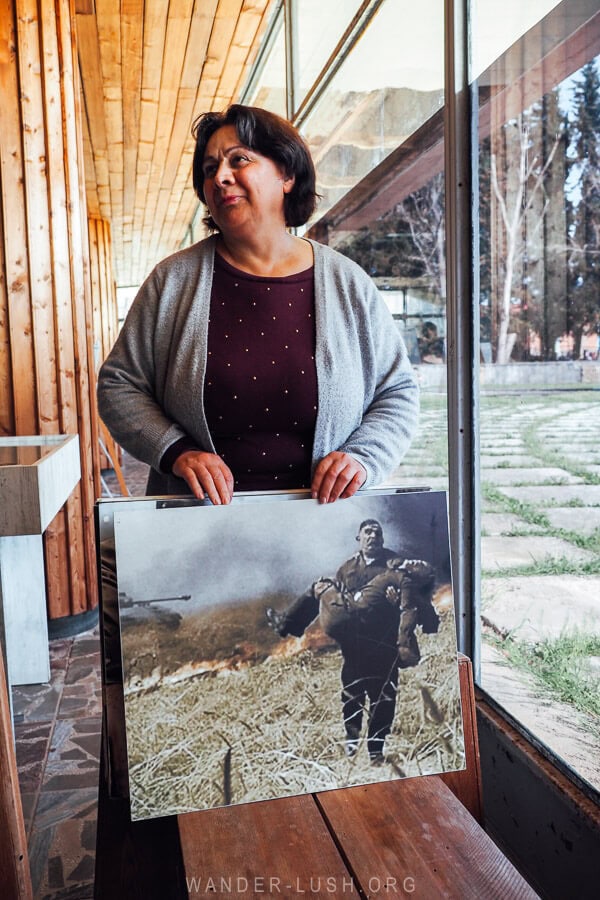
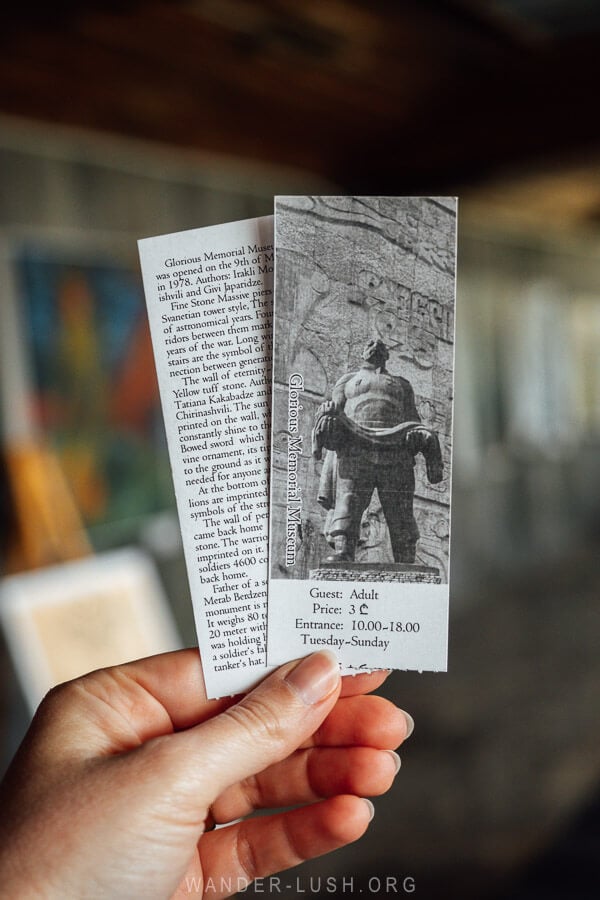
Velistsikhe/Vazisubani
Another 15 minutes up the road from Gurjaani, villages Velistsikhe and Vazisubani are home to a number of cellars and heritage wine estates. Advance reservations are essential so make sure you call ahead a day or two in advance if you want to do a wine tasting at one of these properties.
** Numisi Cellar Museum
This small family owned wine cellar offers tours and wine tastings in their heritage cellar, which doubles as a museum. An old limestone wine press, a collection of clay Qvevris and pitchers, wine-making equipment and other curiosities are on display. Outside, there’s a grain storage house (called a Bengeli), a Tone oven for preparing fresh bread and a mini Churchkhela production centre.
Sit-down meals are available, or you can just wander the grounds, tour the museum and try a couple of the house wines. More information & reservations here.
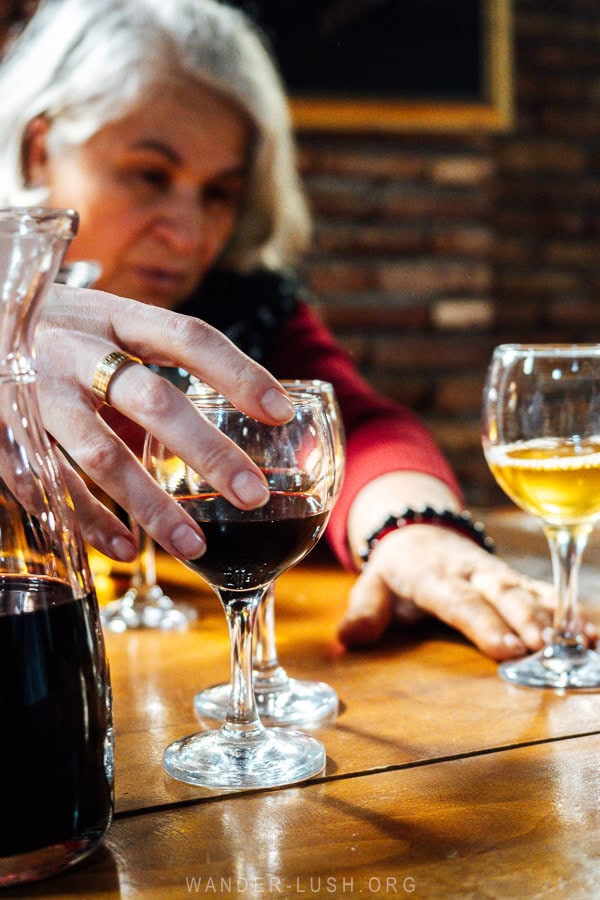
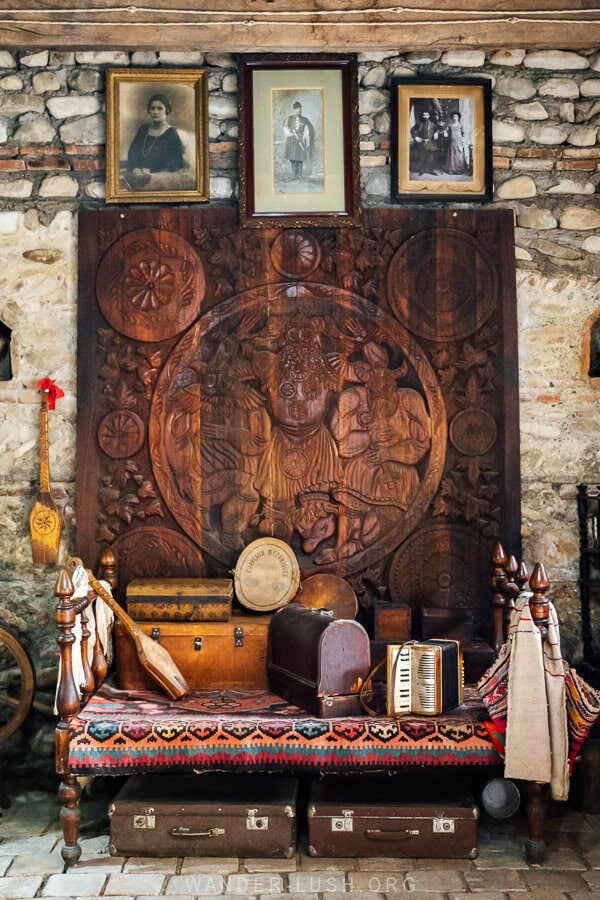
*** Vaxo Oqruashvili Wine Cellar
One of my favourite small cellars in Kakheti, this winery offers tastings of Qvevri wine and sit-down meals on the family’s home veranda. You can see how the grapes are funnelled from the garden into the cellar, and Vaxo will serve you new-season wine straight from the qvevri in clay drinking bowls.
Bookings are essential. The owners are extremely hospitable. More information & reservations here.
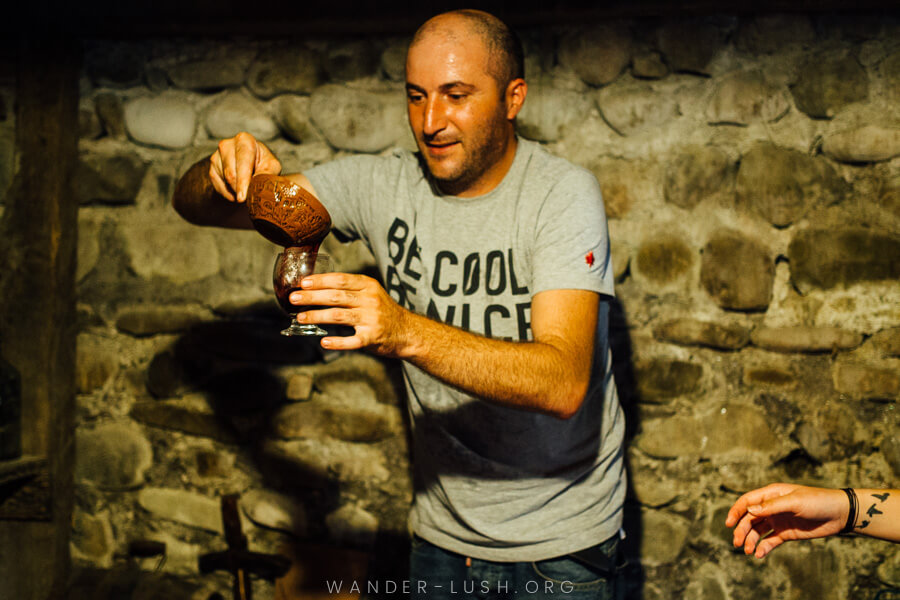
* Chateau Zegaani
Built in 1820 in the Mukuzani micro-region, this heritage estate produces all-natural wines. Tours of the vineyards and wine tastings are available with advance notice.
The main house – a sprawling stone number with a Hogwarts-style dining room – is extremely impressive. More information & reservations here.
* Vazisubani Estate
Set in a restored 19th century palace, the former residence of Sulkhan Chavchavdze, this heritage estate houses boutique suites while a farm-to-table restaurant, cellar and pool are set in a new complex. Wine tours and pairings are available year-round and in summer, the property is known for hosting lavish lunches in the vineyards.
We recently stayed here for a night and really enjoyed the experience. More information & reservations here.
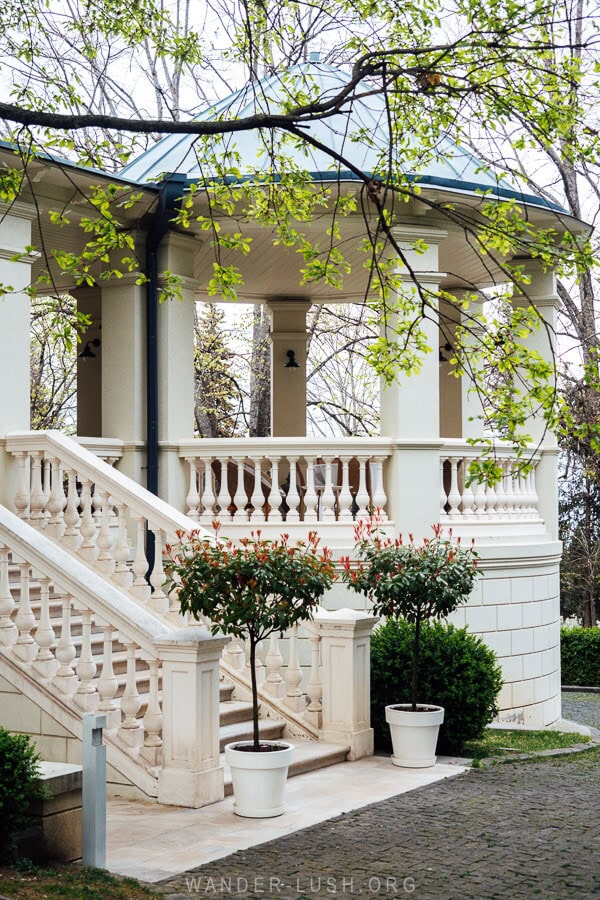
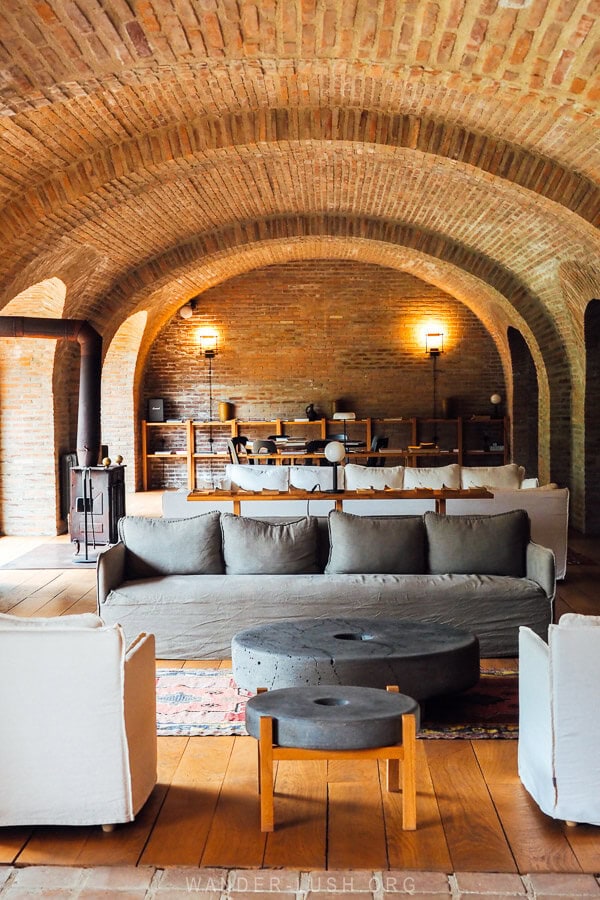
* Velistsikhe Veranda Wine Cellar
For something slightly lower key but no less plentiful, this family cellar in Velistsikhe hosts wine tastings, lunches and Churchkhela-making masterclasses. The cellar and restaurant is open from midday daily.
Extend your time in Gurjaani: There is plenty more to do in Gurjaani, particularly if you’re interested in Soviet-era city planning, architecture and mosaics. The Akhtala Mud Baths were recently renovated and a treatment here could be a fun experience! For more things to do in Gurjaani, see my full guide.
Kvareli
Kvareli is a larger town on the opposite side of the river, 30 minutes by car. Crossing the valley via a perfectly straight tree-lined road is one of the most scenic parts of Kakheti. As you head for the foothills of the Caucasus mountains, you get magical views of the range on the horizon the whole way along. Bliss.
There are vast vineyards all through the river basin where you can stop for an up-close look at the vines. You might even see a Qvevri farm!
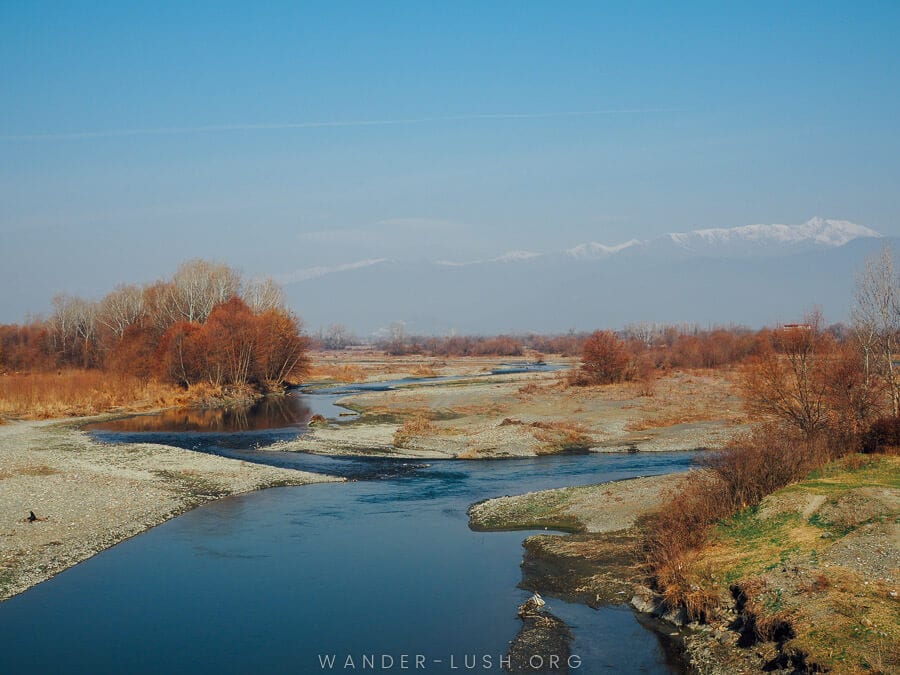
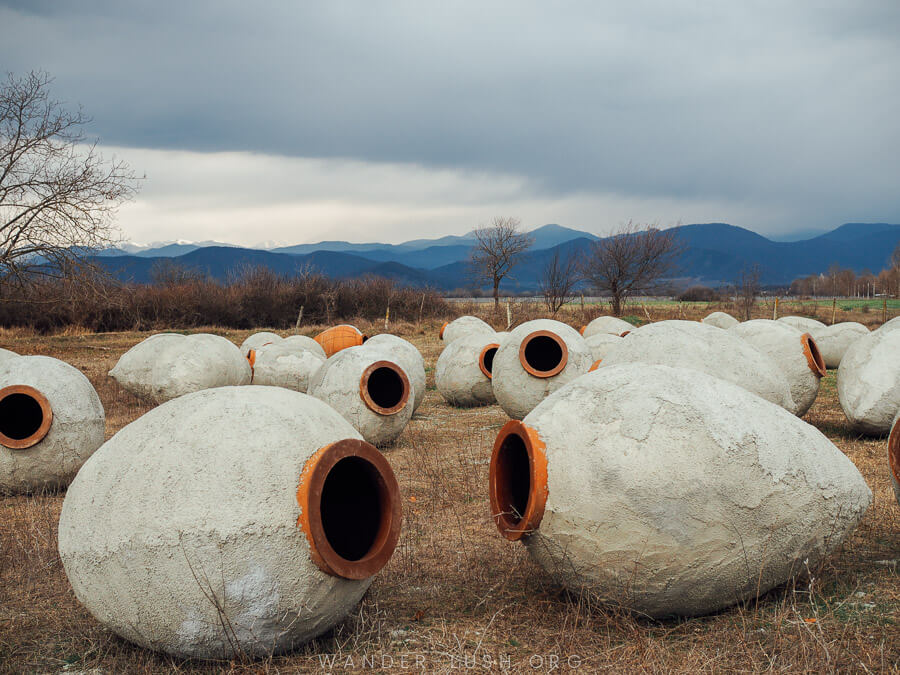
** Dzveli Gavazi’s St. Virgin’s Church
Once you’ve crossed the river, make a quick detour to Akhalsopeli to visit the 6th century Church of the Mother of God. The design is totally unique among churches it Kakheti – it’s a tetraconch shape with a stack of rounded domes over its central square foundations.
*** Wine Yard N1
This award-winning family cellar in Akhalsopeli offers wine tastings (from 50 GEL for all you can drink) and meals and is a nice alternative to the larger commercial wineries listed below. During the Rtveli, they welcome guests to participate in the harvest.
Tell Tika I sent you! More information & reservations here.
*** Winery Khareba
Located in Kvareli, Khareba is one of the largest (if not the largest) commercial cellars in Kakheti. Yes, it’s touristy and very busy, but it’s also pretty awesome. This is one big winery I strongly recommend you don’t skip.
The wine cellar here isn’t underground, rather it’s hewn vertically from the rocky Caucasus mountainside. Interconnecting tunnels total 7.7km in length and store more than 25,000 bottles of wine. Temperatures sit at 12-14 degrees year-round, making it the perfect natural fridge.
I was told the tunnels were originally intended to serve as bomb shelters but since the war finished before construction did, they were co-opted for storing the community’s wine instead. But I’m not sure if that’s true!
Reservations are not required and walk-ins are welcome, but I recommend calling ahead to confirm opening hours. Tour and tasting packages start from around 20 GEL. More information here.
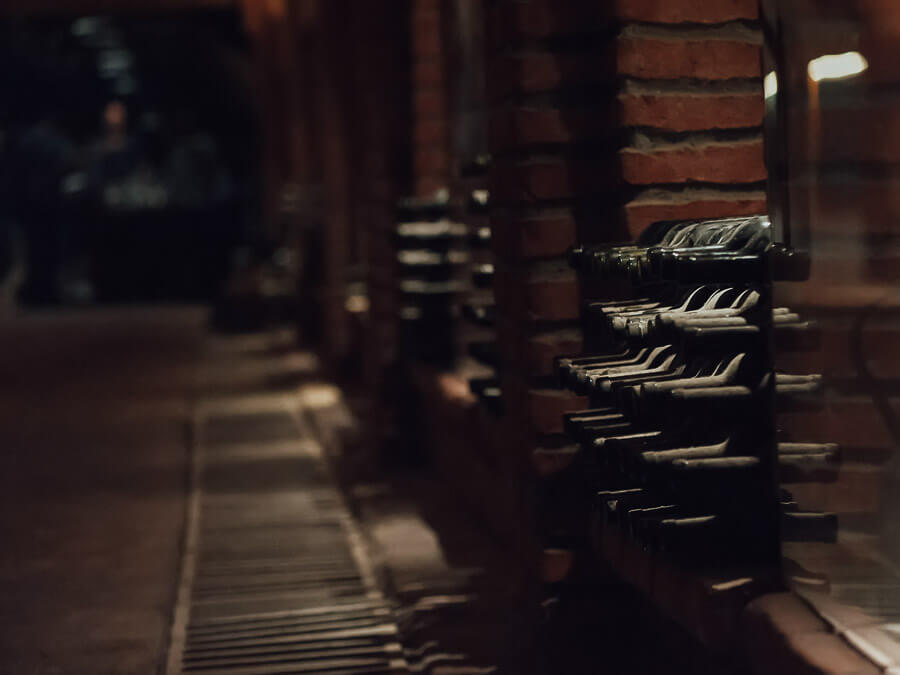
** Kindzmarauli Corporation
Also in Kvareli, Kindzmarauli is another large commercial winery that runs a very slick operation. Small group tours start with a walk through the wine-making and bottling process and finish with a sit-down tasting of 3-5 bottles. The grounds back onto Kvareli Fortress and parts of the walls are visible from inside.
The cellar is open from 9am-6pm daily and tastings start from 20 GEL per person. They also have a new restaurant where you can enjoy an outdoor lunch. Bookings for the wine tasting are not essential, but consider calling ahead to confirm.
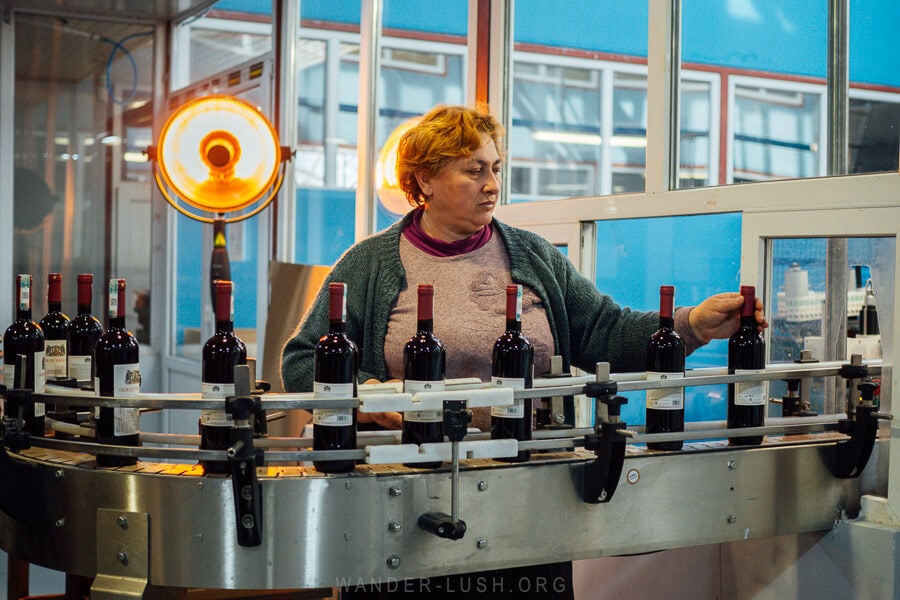
* Kvareli architecture & house museums
Beyond the two big wineries that dominate the centre, Kvareli is a pretty little town with some very interesting architecture, including an abandoned Kino Club and a cool Public Service Hall.
The Chavchavadze State Museum, pictured above, catalogues the noble family’s history in the region and can be visited for a fee of 2 GEL. The facade is more impressive than the interior in my opinion, so feel free to skip it if it doesn’t interest you.
The building was designed by the legendary Georgian architect Viktor Jorbenadze, who also designed the Wedding Palace and a few other Brutalist icons in Tbilisi.
A second house museum for dramatist Kote Marjanishvili is a short stroll away.
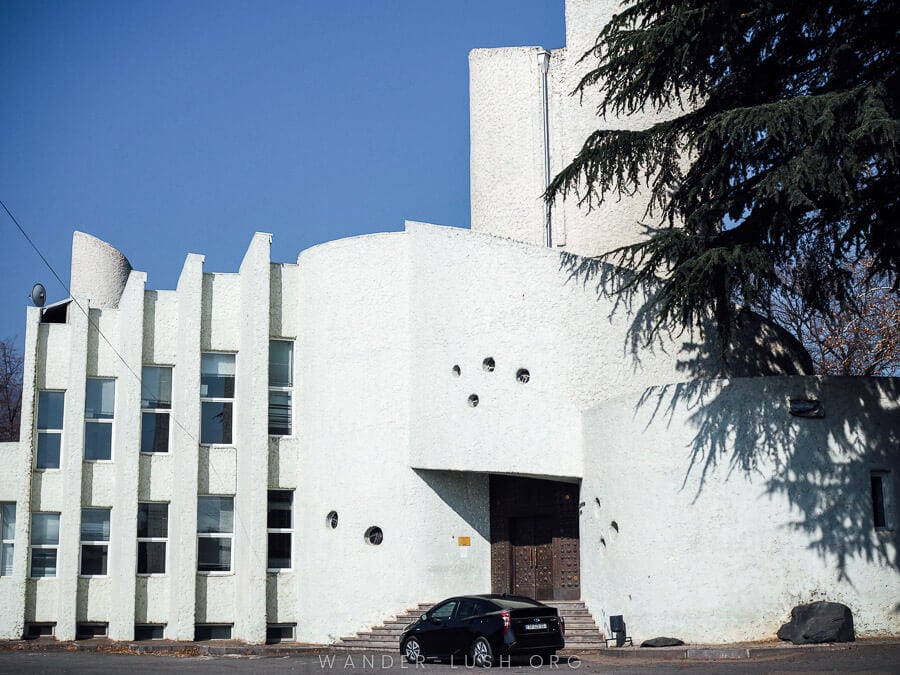
Eniseli & Shilda
15 minutes further north from Kvareli, this area is home to a few excellent wineries including Chateau Eniseli and the Kostarov Family Winery.
*** Nekresi Monastery
Perched perilously high on a forested slope, parts of this monastery date back to the 4th century. To reach the basilica, you need to take the chartered marshrutka up the hill (2.5 GEL per person).
Hunt around for the wine room where you can see a set of Qvevris embedded in the stone floor. The views from the top are spectacular.
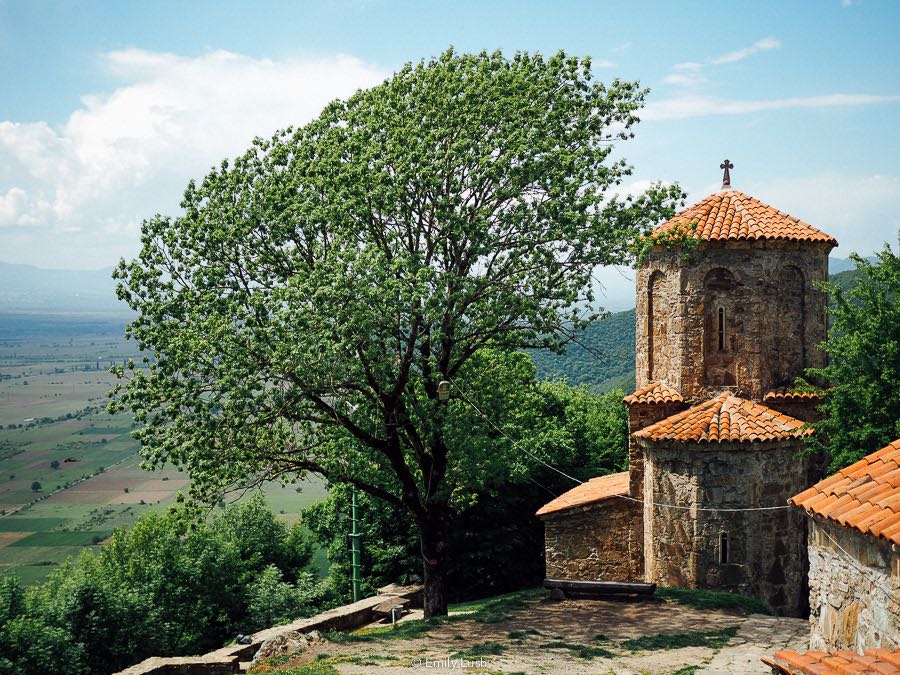
*** Gremi Archangels’ Complex
In the 16th and 17th centuries, Gremi served as the capital of the Kingdom of Kakheti. A once-thriving Silk Road trading town, Gremi eventually met its demise at the hands of invading forces. The turquoise-crested Church of the Archangels and a three-story palace are the only parts of the complex that survived.
Inside, the palace bell tower serves as a museum, displaying a number of artefacts unearthed during digs in the area and a set of portraits of the old Kakhetian kings. For a few extra GEL, you can climb the bell tower for panoramic views of the valley.
The museum and bell tower are open from 10am to 5pm daily. Entrance costs 10 GEL.
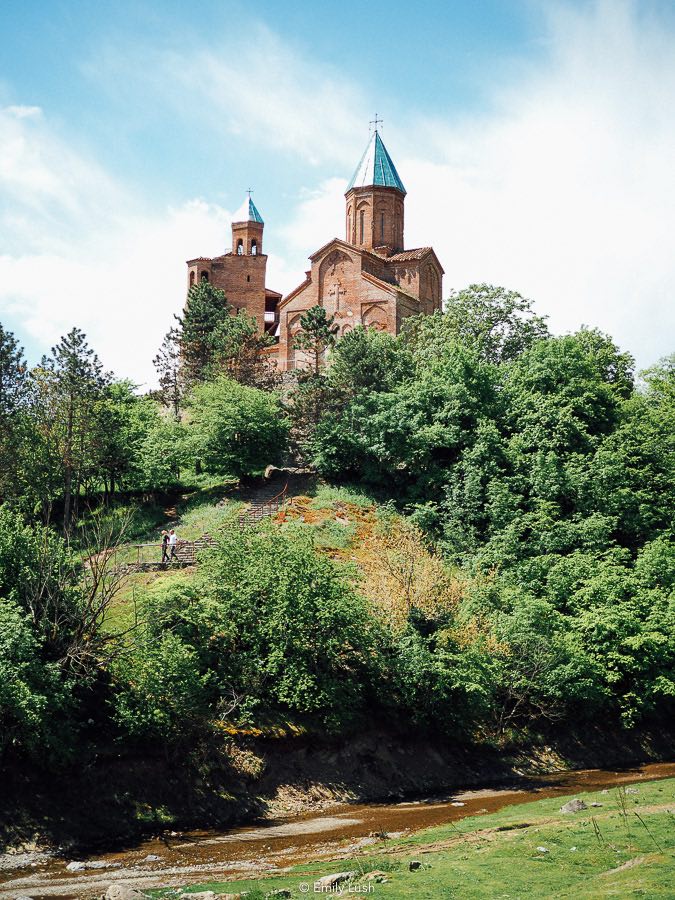
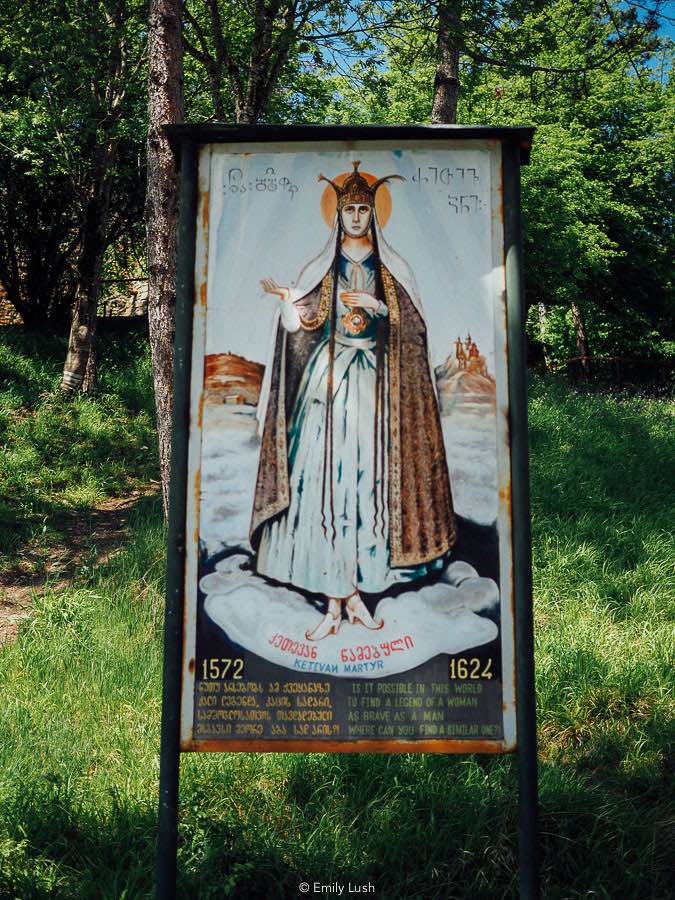
** Friends’ Cellar
Located in Shilda close to Nekresi, Friends’ is part of the Nelkarisi Estate and one of my favourite wineries in Kakheti. Staff are extremely professional and gracious when guiding you around the vineyards. Both Qvevri and European-style wines are produced, hence the combination of clay jars and oak barrels.
There are tasting rooms in the cellar but I prefer to sit upstairs in the breezy restaurant or on the balcony overlooking the vineyards. The wine is excellent (especially the Saperavi) and the tasting plates with local goat’s cheese and figs are exquisite. More information & reservations here.
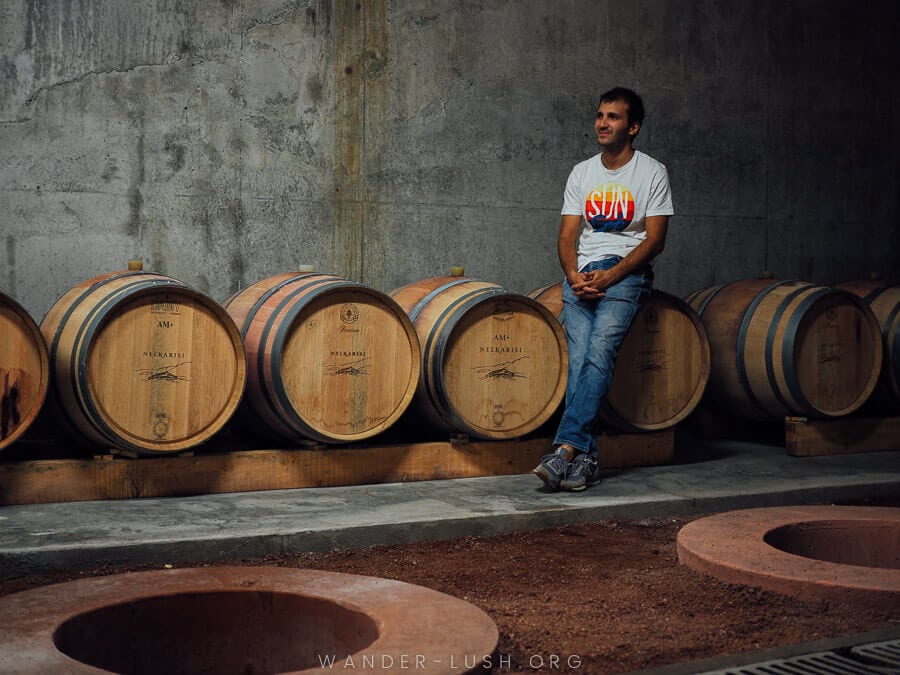
* TEMI-Community
This social enterprise winery/garden produces natural wines and organic fruit and veg. Tours and tastings are available, with proceeds going to help TEMI’s work with the community.
TEMI hosts groups for the Rtveli and can also organise cooking classes, lunches and folk music performances. More information & reservations here.
Day 3: Telavi + North-western Alazani Valley
The city of Telavi is located just 60km from Sighnaghi but it has a very different vibe.
If you spent your second night in Telavi, get out early for a wander around the city. If you’re waking up in Tsinandali, do the opposite – enjoy the breakfast and save Telavi for the evening or the early morning of day 4 before you leave.
The northern part of the Alazani Valley around Telavi is probably my favourite part of the region, so save plenty of time for a slow-paced exploration of the wineries and monasteries here.
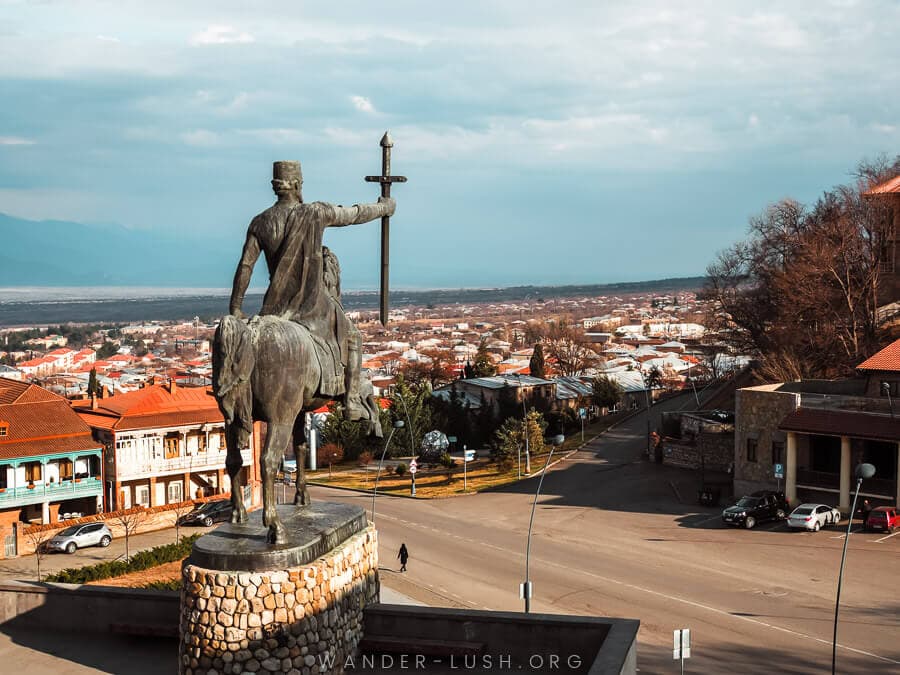
Things to do in Telavi
Telavi is the perfect size for wandering on foot. Set aside a couple of hours to see the highlights, or ask your driver to stop off at a few key locations before you leave town.
*** Batonis Tsikhe (Telavi Fort) & History Museum
Telavi is built across a hillside with the higher part of the city dominated by Batonis Tsikhe. The ‘Master Fortress’ or ‘Prince’s Fortress’ was reconstructed in the 17th century and comprises ramparts, towers and an inner compound with a royal palace and bathhouses.
The modern museum is one of the best in Georgia, with a beautiful collection of paintings and ethnographic objects from the region. The ticket price also includes entrance to the restored palace where King Erekle II was born and died.
The History Museum is open from 10am-6pm Tuesday-Sunday. Entrance costs 5 GEL.
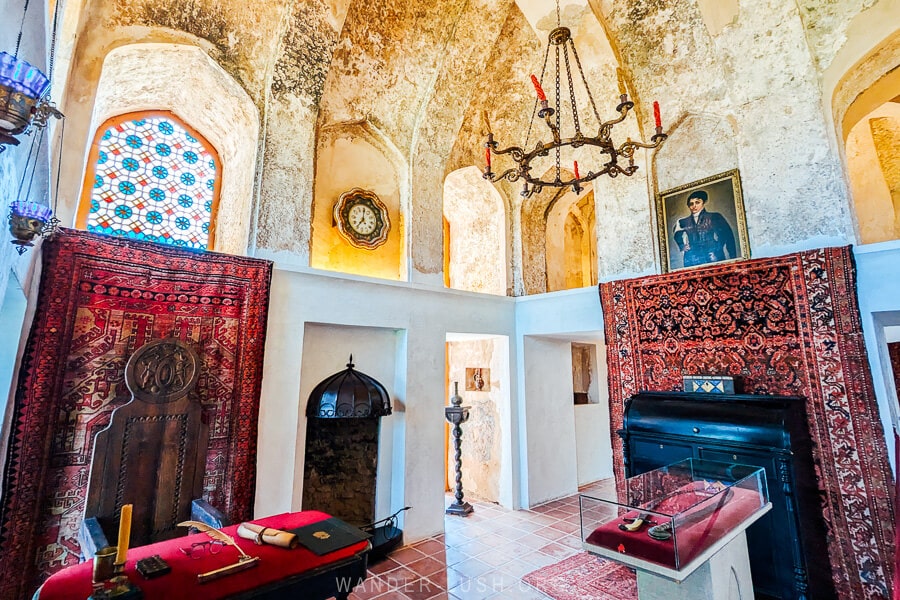
*** Telavi Bazaar
Set under a domed roof and open on all sides, Telavi’s local bazaar is a cacophony of colour, chaos and commerce. Visit in the mid-morning to see the market at its liveliest.
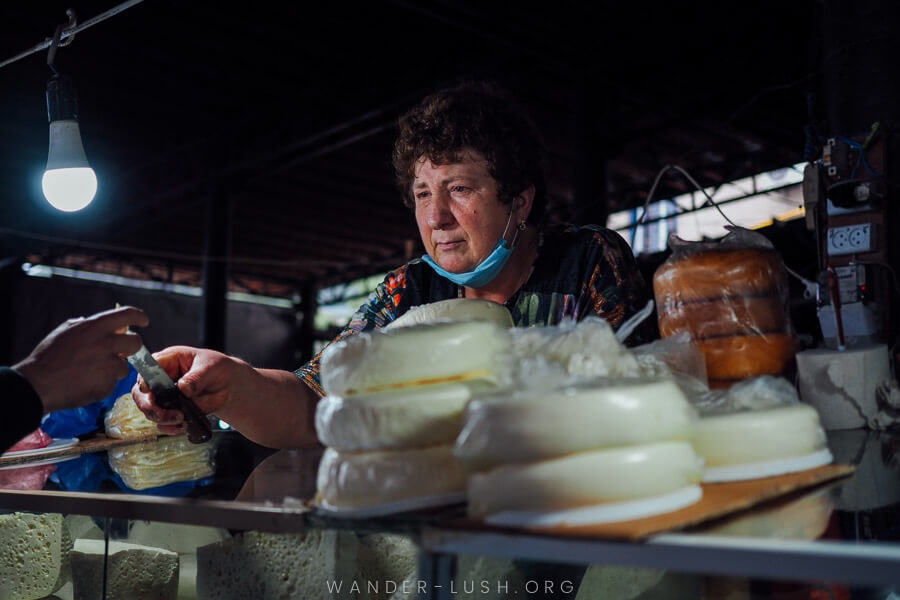
*** Historic Cholokashvili Street
Every house in Telavi is a work of art, especially the balconied facades on Cholokashvili Street. This is one of the oldest cobbled streets in Telavi and is known for its heritage homes.
Stop in at Kera ceramic studio to pick up a souvenir.
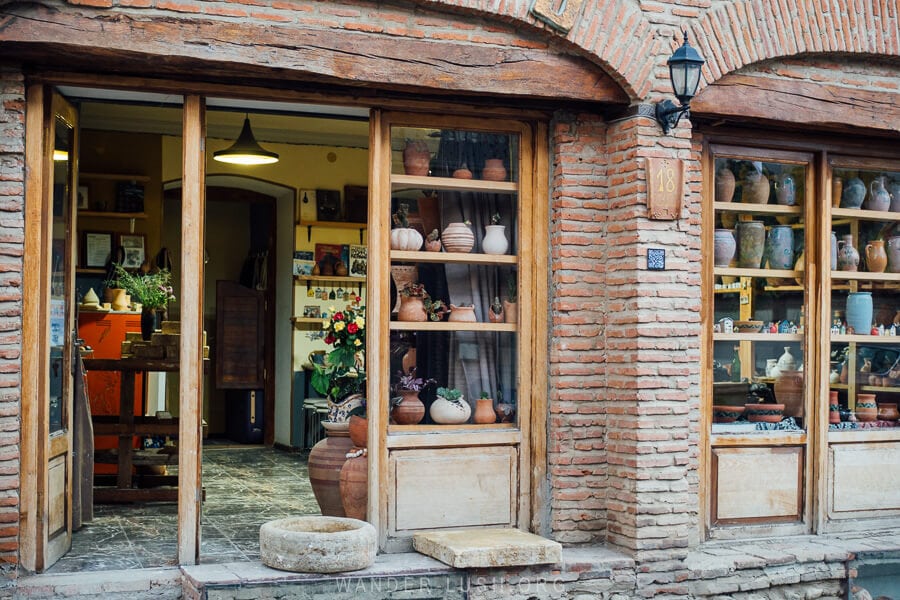
*** Odlisi
Located on Cholokashvili Street, Odlisi offers one of the most memorable foodie experiences in all of Georgia. This cheese atelier and bar is run by a beautiful family (Rati, Maka and their three daughters) who produce around 30 different cheeses from their Swiss village cows!
Cheese tours and degustations are available by appointment. Maka has an incredible flare for design and the table spreads she puts on are pure magic. In summer, Odlisi is usually open in the evenings with additional tables set up in their courtyard. It’s always a good idea to message them a few days in advance to reserve a table.
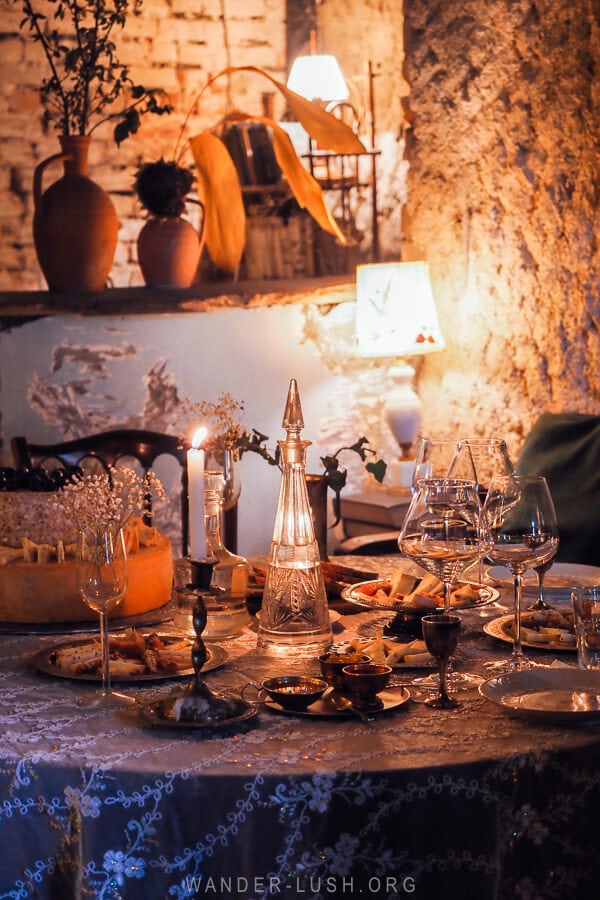
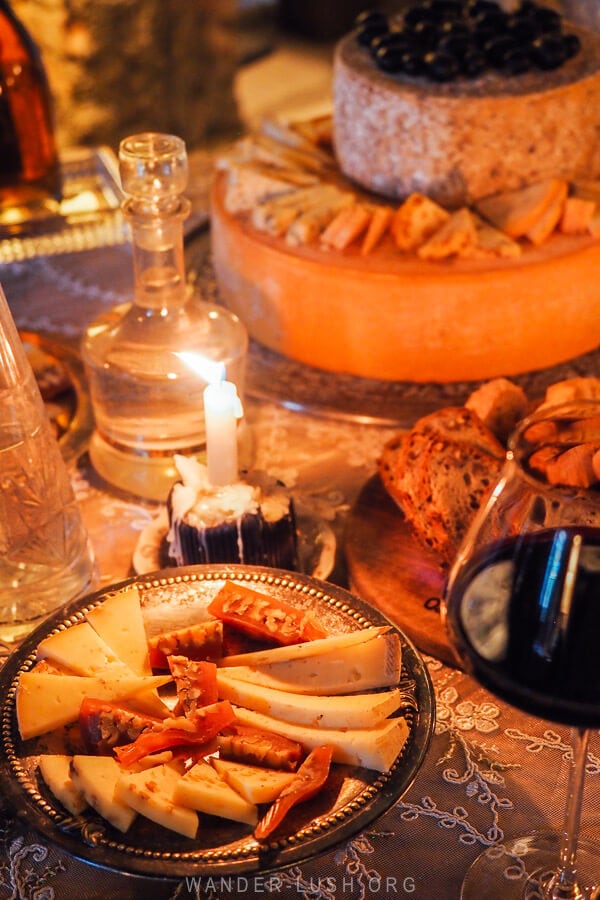
→ Read my full guide for more things to do in Telavi plus restaurant and wine bar recommendations.
North of Telavi
*** Dzveli Shuamta’s Monastery
I missed this monastery on my first visit to Kakheti but having now visited, it’s a firm favourite. There are actually two Shuamta monasteries, an old and a new – Dzveli Shuamta (the older of the pair) is the more picturesque.
It sits even deeper in the forest and can be reached via a 2km walking path or by car. The top of the monastery mirrors the peaks of the Greater Caucasus behind. The interior is quite basic but it’s worth visiting for the views. Akhali Shuamta – New Shuamta Monastery – is located closer to the highway.
Both are open to visitors from 9am daily. Entrance is free.
Note: If you’re short on time on day 3, you could visit Shuamta Monastery on the last morning on the way back to Tbilisi from Telavi.
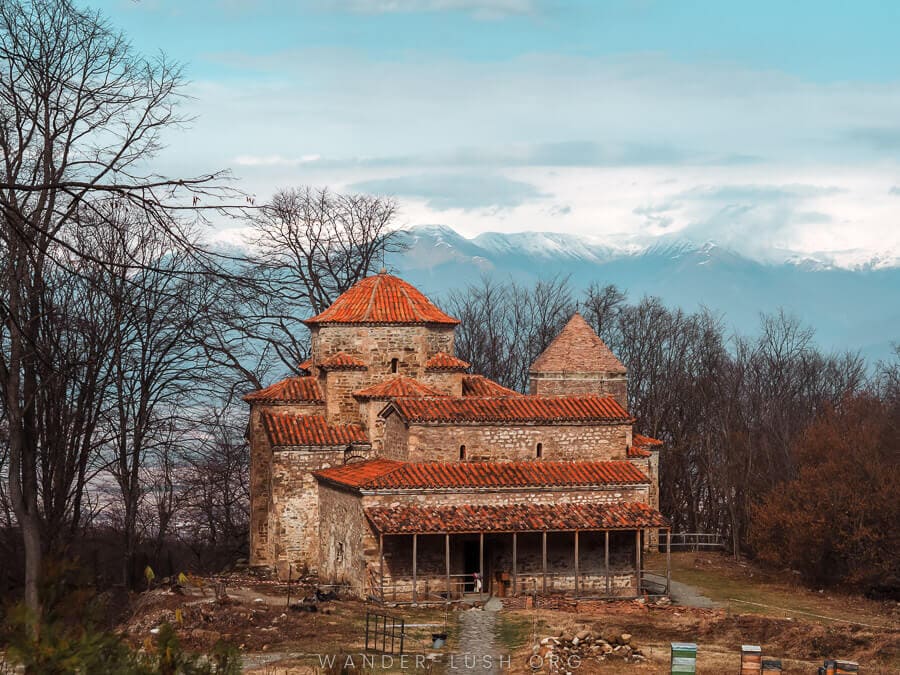
*** Alaverdi Monastery
After yesterday’s expedition you may be reaching church-and-monastery saturation point. But Alaverdi is impressive in the truest sense of the word and shouldn’t be skipped.
Built in the 11th century, this huge basilica was the tallest in Georgia until Sameba Cathedral was erected in Tbilisi. Hemmed in by defensive walls, the monastic complex also includes a vineyard (wine tastings can be organised on request, although it’s best to visit with a guide), an apiary and a rather beautiful graveyard.
The grounds and cathedral are open from 8am until 6pm daily. Entry is free, and the dress-code is strictly enforced – women should borrow an apron skirt from the gift shop before entering.
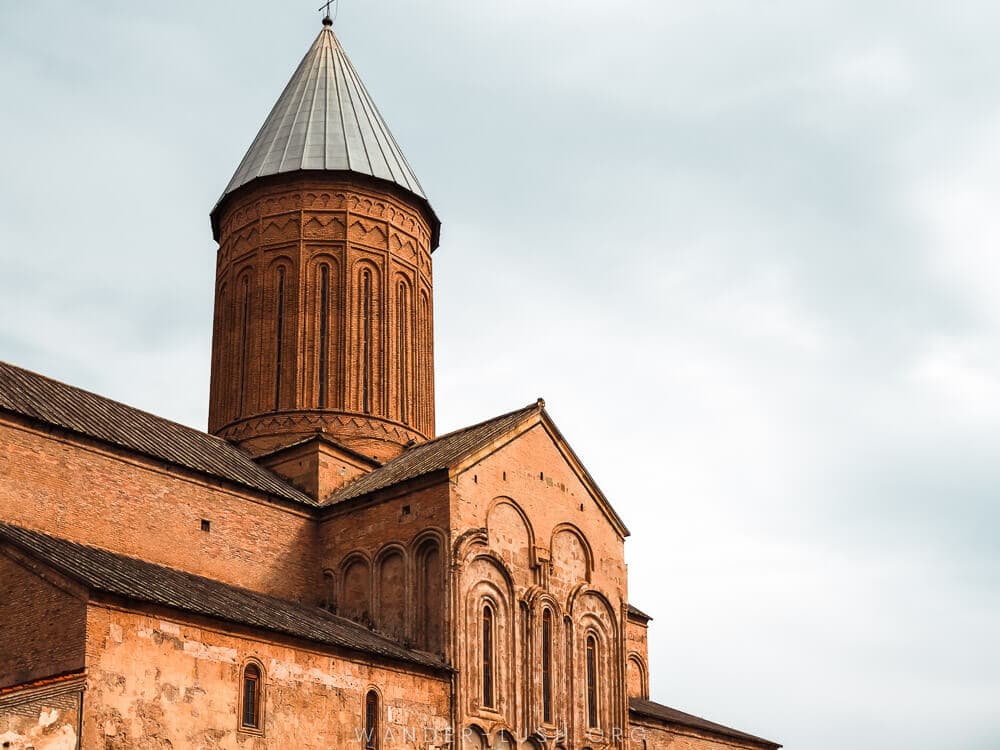
*** Ikalto Monastery & Academy
This complex dates back to the 6th century, making it one of the oldest monasteries in Kakheti. Highlights of the compact grounds include the Church of Transfiguration (currently undergoing restoration) and the crumbling ruins of an old academy where Shota Rustaveli (Georgia’s national poet) studied in the 12th century.
The grounds are scattered with antique Qvevri, making the whole place very picturesque.
Ikalto is open from 8am daily. Entrance is free.
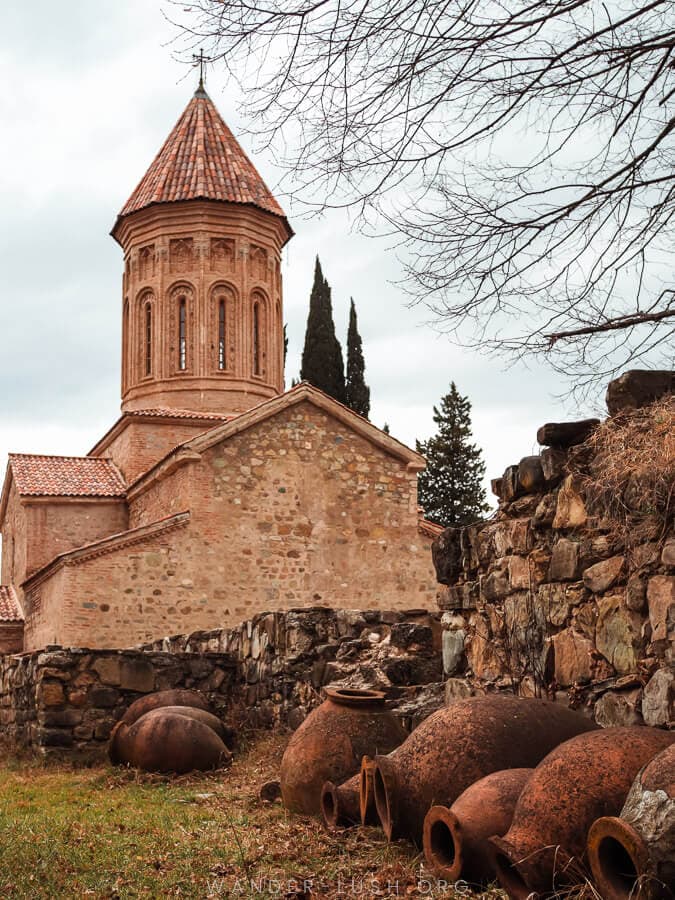
** Zaza’s qvevri workshop
Zaza Kbilashvili is a master Kakhetian Qvevri builder whose workshop is located off the main road between Telavi and Ikalto. During a short tour, you get to see how the Qvevri-building process unfolds, from raw clay to fired vessel. There are very few Qvevri masters still working in Georgia so seeing this process up close is a true honour. Zaza also has a small cellar where he makes his own wine and brandy.
Advance bookings are essential, and Zaza speaks limited English so it’s best to go with a guide. Eat This! Tours sometimes include a visit to Zaza’s place as part of their Telavi itinerary – be sure to request it when you make your booking.
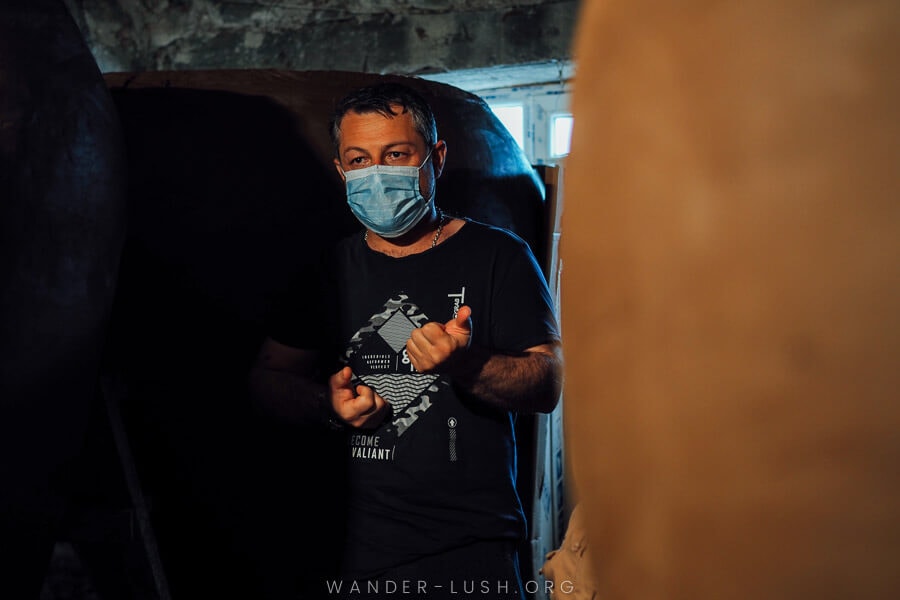
* Akido & other wineries in Ruispiri
If you have time for a wine tasting, Akido Vineyard (reservations here) and Ruispiri Biodynamic (reservations here) – both close to the Ikalto Academy – are highly recommended for their natural wines and tasting plates.
Akido is a personal favourite of mine: They have a beautiful restored wooden house on the property and wine tastings are held on the veranda.
If you’ve run out of time, you can safely save today’s wine tastings for the vineyards south of Telavi.
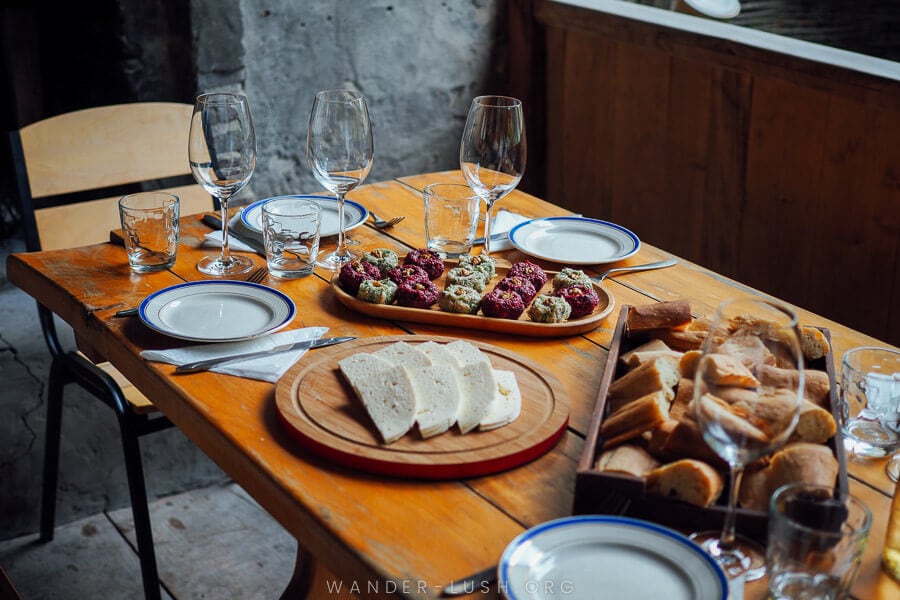
South of Telavi
*** Tsinandali Estate
The house and estate of Georgian poet/militaryman/aristocrat Alexander Chavchavadze is a must-visit near Telavi. Take a guided tour of the house and its restored rooms for a taste of how the other half lived in 19th-century Georgia.
The first bottle of Kakhetian qvevri wine – a saperavi – was corked here. The museum and enoteca display Chavchavadze’s personal collection of winemaking ephemera and vintage bottles.
The restored estate grounds feature a sprawling garden and an open-air cellar, where you can taste eponymous Tsinandali white wine.
The complex is open daily from 10am until 6pm. A visit to the House Museum of Alexander Chavchavadze and enoteca costs 10 GEL.
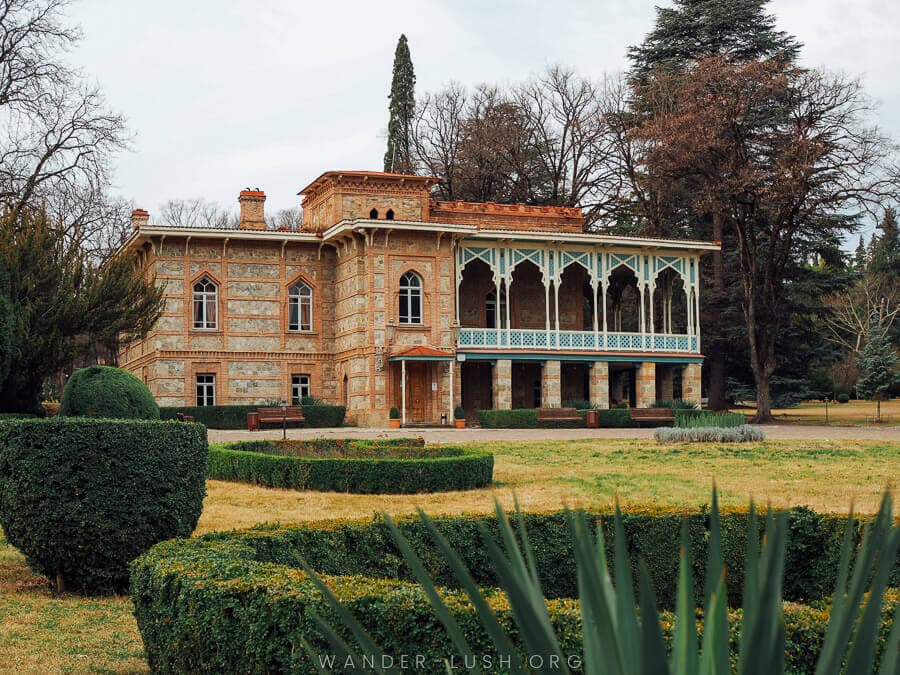
*** Shumi Winery
As well as wine-making facilities, Shumi has a small house museum and a collection of antique Qvevris. Tours and tastings start from around 35 GEL. More information here.
** Wineries in Shalauri & Kisishevi
If you have time to squeeze a couple more wineries in, Shalauri village 20 minutes outside Telavi contains a number of cellars where you can eat dinner and partake in one final tasting.
Togonidze’s Wine Cellar is run by an artist-winemaker couple who have decorated their home with beautiful hand-painted details. They offer home-cooked meals, wine tastings and onsite accommodation. Details & reservations here.
Shalauri Wine Cellar is a mid-sized boutique winery that produces Qvevri wines exclusively. Tastings are available for 40-70 GEL. Details & reservations here.
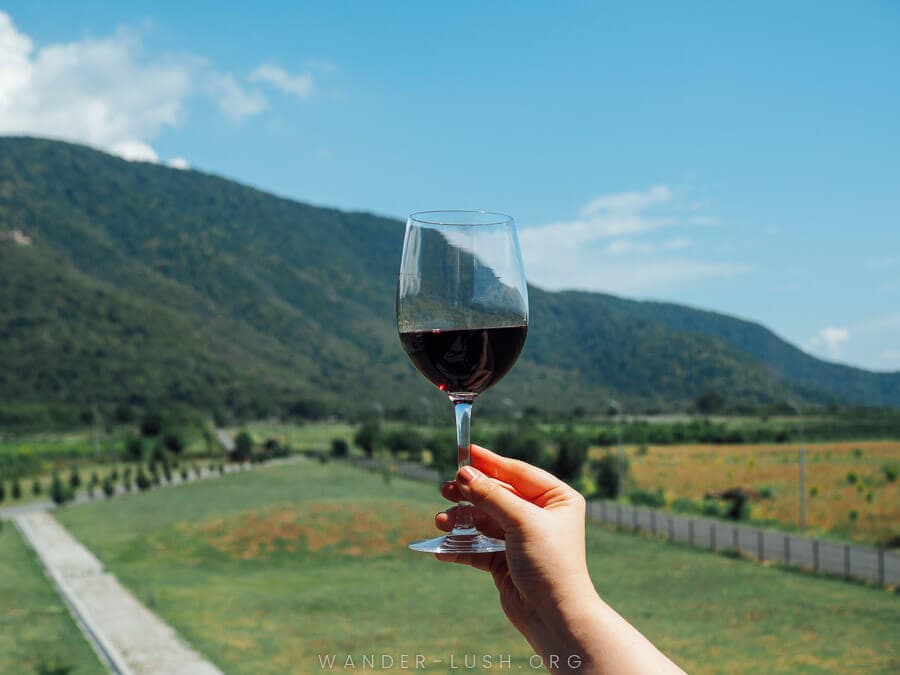
Mosmieri Kakheti Wine Centre (pictured below) in Kisishevi between Tsinandali and Telavi is a commercial winery and chateau that offers formal wine degustations and meals on an outdoor terrace. Details & reservations here.

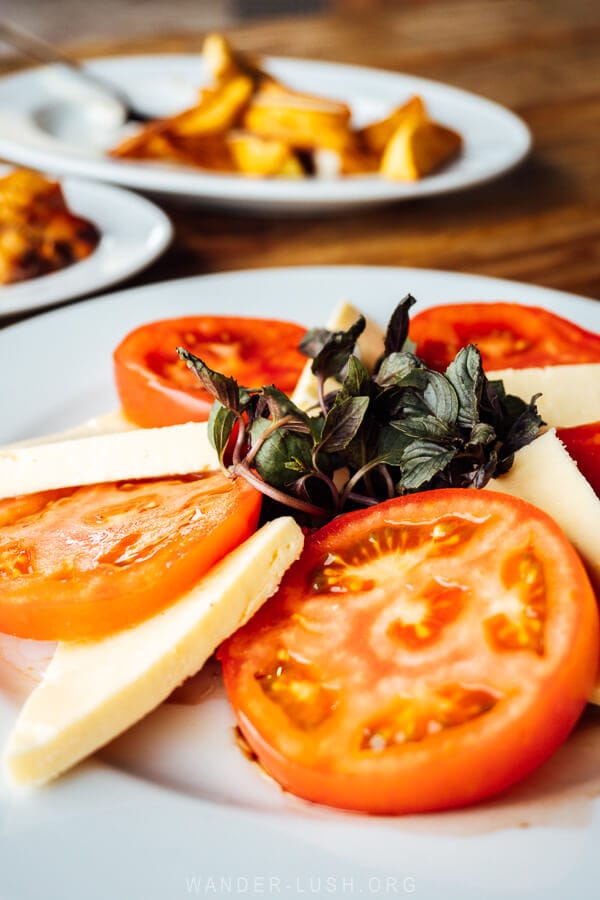
Day 4: Back to Tbilisi via the Gombori Pass
The quickest way back to Tbilisi from Telavi is via the incredibly pretty (and very windy!) Gombori Pass, one of Georgia’s most scenic roads.
Along the green Gombori Pass you’ll see several vendors selling honey.
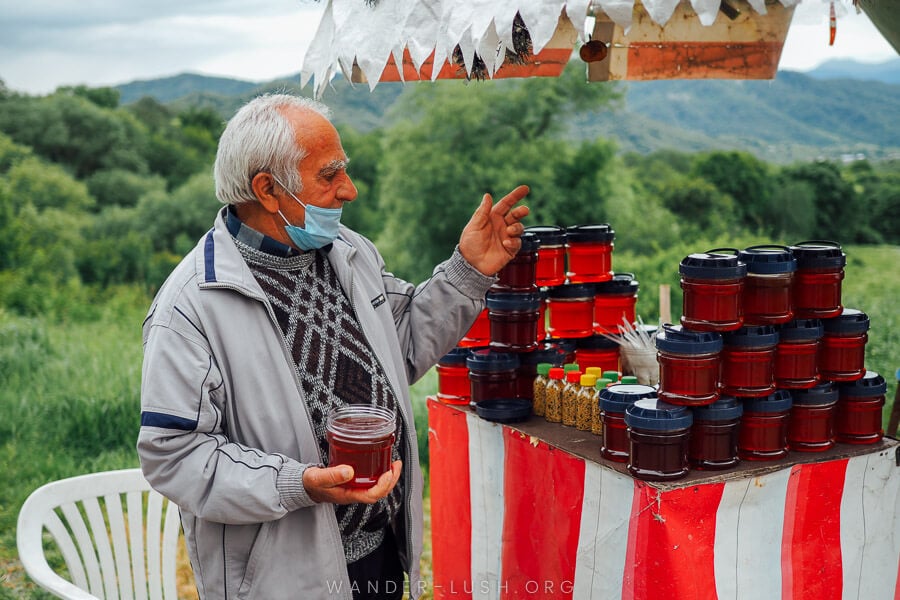
Ujarma Fortress lies at roughly the halfway point and is a good place to break the journey after crossing the pass. The complex dates back to the 3rd century and has been partially restored, with walkways and lookout points added to the stone ruins.
The complex is accessed via a short but steep path that opens up on the left-hand side of the highway.
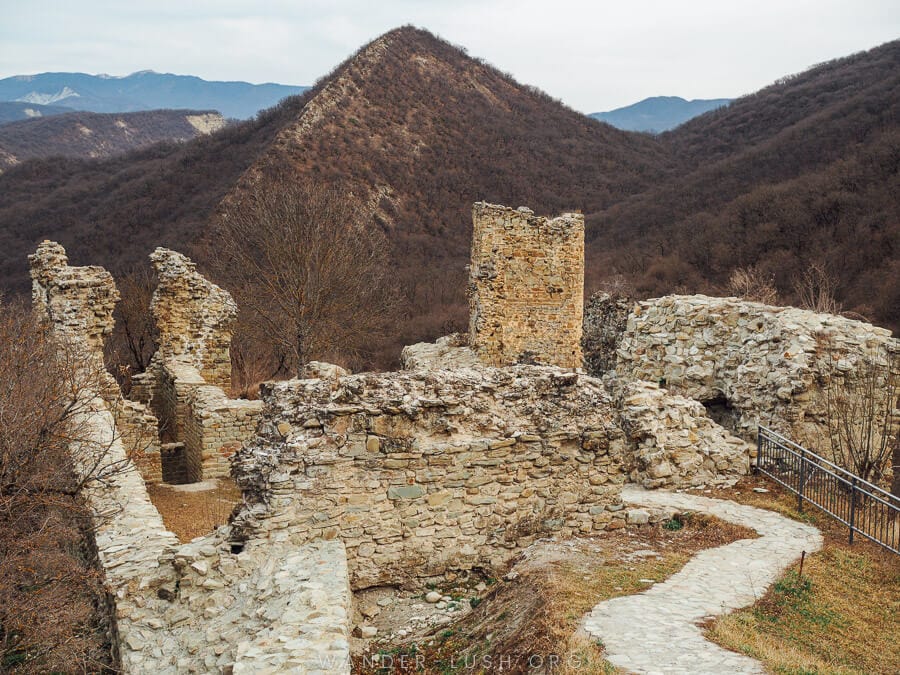
Less time in Kakheti? Alternative itineraries
One day in Kakheti
If you only have a day to spend in Kakheti, I strongly recommend joining an organised day tour from Tbilisi or hiring a driver through GoTrip. You’ll only get to see a very small part of Kakheti, but a taste is better than nothing.
On my second visit to Georgia, I joined two friends on a full-day wine tour from Tbilisi. There wasn’t too much driving involved, and we got to see a good range of wineries plus Bodbe Convent. All in all, it was a great experience.
I have since travelled to Kakheti with a number of other tour providers. After extensive research, my preferred company for wine tours in Georgia is Eat This! Tours, a small international outfit based in Tbilisi that focuses on authentic experiences and small family wineries. Many of their guides are trained sommeliers. If you want an in-depth wine experience in Kakheti, these are the folks to travel with. Read more about my recent experience with Eat This! here.
Eat This! offers a range of pre-designed Kakheti itineraries, including day trips and 1-2 night trips. My top pick is definitely the Vines and Mountains 1-day tour that focuses on Telavi. Check prices and availability here and mention wanderlush in the coupon code to get 5% off your booking.
If you’re OK with something more casual, here are a couple of recommended Kakheti day trips from Tbilisi offered by other companies I know and trust:
Option 1: Grand tour to Kakheti with Friendly.ge. This private tour offers a very comprehensive introduction to the region and is perfect if you only have one day for Kakheti. This company has terrific guides and designs special itineraries that are a cut above the rest. More information and bookings here (use the code WANDERLUSH to save 10%).
Option 2: Kakheti and Sighnaghi Private Tour with Friendly.ge. This alternative itinerary covers less ground, but includes the walled town of Sighnaghi plus a couple of unique foodie experiences. More information and bookings here (use the code WANDERLUSH to get 10% off).
Option 3: Kakheti Region Full-day Group Tour with Gamarjoba Tours. Perfect for budget travellers who want a taste of the major highlights. Gamarjoba guides are professional and very engaging – I love travelling with this company. More information and bookings here.
Option 4: Authentic Local Wine Experience in Kakheti with Evatour. This award-winning tour covers Sighnaghi and a good mix of smaller and larger wineries. More information and bookings here.
Another option is to hire a car and driver through GoTrip for the day. You won’t have a guide per se, but you will have greater flexibility to explore the region. One of the best things about GoTrip is that you can make as many stops as you like without the price increasing.
Here is a sample day trip itinerary that you can customise. To give you an idea of the price, a visit to Bodbe Convent plus a few of the region’s best wineries with pick-up and drop-off in Tbilisi included costs as little as $65 per car.
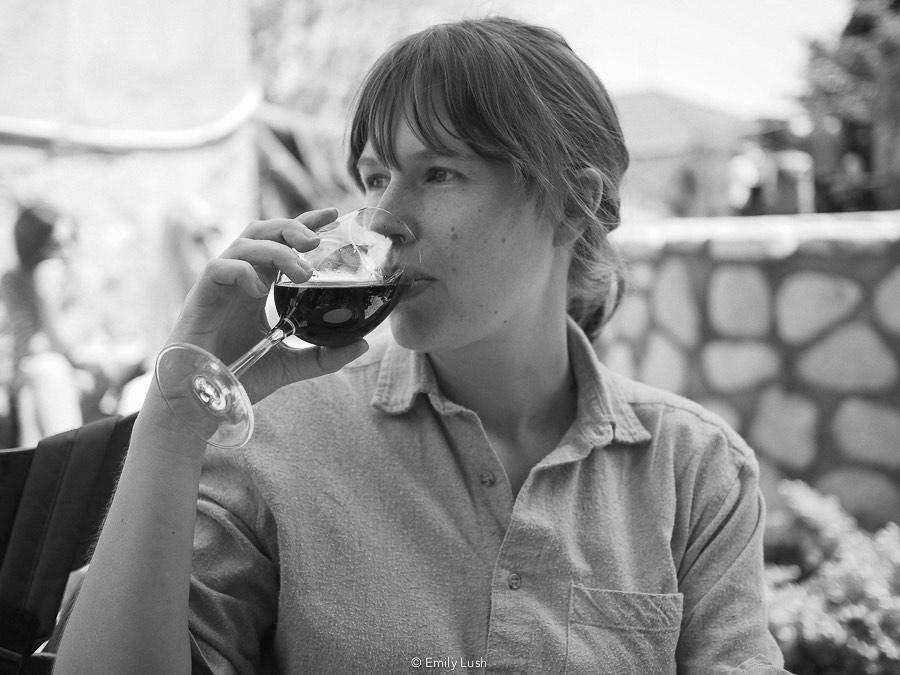
2 days in Kakheti itinerary
If you have two full days and 3 nights to spend in Kakheti, I recommend the following itinerary:
- Day one: Sighnaghi + Gurjaani & Tsinandali – Overnight in Telavi or Tsinandali
- Day two: Alaverdi, Shuamta, Ikalto & Nekresi + Telavi – Overnight in Telavi
Other places to visit in Kakheti
David Gareja Cave Monastery & Udabno
David Gareja, the incredible cave monastery that straddles the border of Kakheti and Azerbaijan, is one of Georgia’s highlights. Some people choose to visit as a day trip from Kakheti, and many guesthouses offer this option.
It might look close on a map – but because of the way the road runs (almost all the way back to Tbilisi), it takes the same amount of time to get to David Gareja from Sighnaghi as it does from Tbilisi.
In my opinion it’s much better to visit the monastery as a day trip from Tbilisi instead and save your time in Kakheti for other wine-related activities.
DedoplisTskaro
Located in the southern part of Kakheti close to the border with Azerbaijan, Dedoplistskaro (‘Queen’s Spring’) is home to some fantastic (and lesser-visited) wineries including Nasrashvili Family Winery.
One of my favourite craft studios, Pesvebi Art-Studio, is based here and offers studio visits and carpet-weaving masterclasses.
This town is the gateway to the incredible landscapes of Vashlovani National Park and the spectacular Big Shiraki abandoned Soviet airfield.
Read my Dedoplistskaro Travel Guide for more things to do and travel tips.
Alvani
The twin villages of Zemo and Kvemo Alvani are located at the foot of the mountains in the northern part of the Alazani Valley. This is the jumping-off point for Tusheti, Georgia’s most remote mountain region, and as the place where most Tush families spend their winters, it’s also a stronghold of Tushetian culture. There are a few wineries to visit, including Papa Zurabo Cellar, plus felt craft producers and Kakheti’s only wool-spinning factory.
Kardanakhi
This small village is located 25 minutes away from Sighnaghi at the bottom of the hill. If you’re basing yourself in Sighnaghi, this is one of the closest vineyards for a wine tasting. Kardanakhi Wine Factory #1, Nikalas Marani and Nika Winery all come highly recommended.
Babaneuri
Further north along the valley towards the mountains, this village backs onto a nature reserve. There are lots of fortresses and churches scattered around the area. If you’re looking to do some hiking in the wine region, this is the place.
Onward travel from Kakheti
If you’re travelling on to western Georgia then you’ll first need to transit back through Tbilisi. You can quite easily make it to Gori or Kutaisi on the same day.
If you plan to continue on to Kazbegi via the Military Highway, you can take the ‘back road’ through Tianeti to join up with the Military Road at Zhinvali. This road is fully sealed and an excellent drive.
Another option is to head east further into Kakheti to visit Lagodekhi Nature Reserve. From there, you can continue onward into Azerbaijan via the border pass at Matsimi. (Note that the Azerbaijan land border is currently closed to inbound travellers and will not reopen before July 1, 2024.)
If it’s the right season (usually the pass is open from early June to early October), you can head north from Telavi into Tusheti National Park via Alvani and take in some of Georgia’s most magnificent mountain scenery. Stop off in Pankisi Valley along the way and spend a few nights at Nazy’s Guest House, one of the finest homestays in the country.
It’s possible to make any of these trips from Telavi (or from Sighnaghi via Telavi) – just ask at your guesthouse for assistance.
Georgia essentials
Here are the websites and services I personally use and recommend for Georgia. Check out my full list of travel resources for more tips.
FLIGHTS: Search for affordable flights to Tbilisi, Batumi or Kutaisi on Skyscanner.
TRAVEL INSURANCE: Insure your trip with HeyMondo, my preferred provider for single-trip and annual travel insurance (get 5% off when you book with my link).
SIM CARD: Magti is my preferred provider, with prices starting from 9 GEL/week for unlimited data. See this guide for all the details about buying a Georgian SIM card.
AIRPORT TRANSFERS: Most flights into Georgia arrive in the early hours. For ease, pre-book a private transfer from Tbilisi Airport to your hotel (from $17) or from Kutaisi Airport to Tbilisi (from $90) with my partners at GoTrip.ge.
ACCOMMODATION: Booking.com is the most widely used platform in Georgia. Use it to find family guesthouses, private apartments, hostels and hotels around the country.
CAR HIRE: Find a great deal on a rental car in Georgia – use the Local Rent website to book through a local agent (prices start from $20/day).
DAY TRIPS & CITY TOURS: Use Viator or Get Your Guide to browse a range of day trips and city tours. For off-beat programs, I recommend Friendly.ge (use the promocode wanderlush for 10% off). For in-depth day trips to Georgia’s wine regions, I recommend Eat This! Tours (use the promo code wanderlush for 5% off).
PRIVATE TRANSFERS: GoTrip.ge is a terrific service for booking a private professional driver and car for the day. Use it for A-to-B transfers, a customised round-trip itinerary, or a multi-day trip. You can stop wherever you like for as long as you like without the fixed price going up.
NEED SOME HELP?: Need feedback on your itinerary or personalised travel tips? I offer a one-on-one consultation call service for Tbilisi and Georgia. More information and bookings here.



